

Professional BoatBuilder Magazine
Venting the engineroom.
By Steve D'Antonio , Jun 17, 2015
This engine intake includes a 180° gooseneck that is designed to prevent ingestion of water. Consideration should be given to engine air intake locations: those that are subject to heavy spray are less than ideal, and if chosen should include a means of water exclusion or separation.
I looked at the thermometer attached to the engine’s air inlet filter and raised an eyebrow. It read 117°F (48°C), and it hadn’t stopped climbing. Before looking at it, however, I knew this engineroom was hot—too hot, In addition to my drenched coveralls, many surfaces were simply too hot to touch, including the handrail around the engine.
On its own, that temperature reading, while seemingly high, isn’t of much value without knowing the ambient temperature, the temperature of the air outside the boat, or the air that is being drawn into the engineroom for cooling. The difference between these two numbers, often referred to as “delta t,” tells an important story about engineroom ventilation design and efficiency.
In short, engines that ingest hot air burn fuel less efficiently than those that ingest cool air. The warmer an engineroom is, the harder it is on the gear and systems housed there; heat equates to accelerated aging, higher failure rates, and greater operating expense. Perhaps of equal importance, the failure of a builder or boatyard to meet engine manufacturer temperature guidelines can result in denial of warranty coverage for the engine or generator.
Ventilation Basics
All but the smallest engine and engine room installations will almost certainly require forced ventilation. Fans must be rated for continuous duty, like the “squirrel cage” model shown here.
Engineroom ventilation falls into two categories, those required for cooling the space, and those needed for combustion. The air used to cool the compartment improves not only the combustion efficiency, but also the longevity and efficiency of gear in this space, including engines, generators, compressors, and electrical and electronic components (and also makes it a more comfortable place to work). Where generators are concerned, while the engine portion is typically liquid cooled, the electrical generation end relies on air from the engineroom for its cooling (a small number of generators rely on liquid cooled stators). When engineroom temperature is excessive, generator manufacturers will often lower the unit’s rated output.
Additionally, heat takes a toll on “soft goods” such as generator couplings, belts, motor mounts, torsional vibration dampers, transmission damper plates, hoses, insulation, voltage regulators, and other electrical and electronic components, as well as batteries. Whenever possible, it’s always preferable to locate batteries, particularly the house bank, outside engine compartments.
Measuring Temperatures
Guidelines for calculating the cooling needs of enginerooms abound, however, as a general rule of thumb, (these apply to wet exhaust engines) to determine the necessary air flow rate, in cubic feet per minute, use this formula (2.75 x hp) – 90. Having said that, it’s wise to defer to requirements established by engine manufacturers, or whichever is greater.
For the sake of consistency, and to comply with engine manufacturer guidelines, engine room air temperature should be measured at the engine inlet or filter. Digital probe type thermometers should be used; avoid infrared pyrometers for this measurement as they often yield inaccurate readings.
Ideally, the delta t, which should be measured at the engine or generator air inlet or filter, and at the louver where air is drawn into the engineroom from the deck, should not exceed 30°F/16°C. (This varies among manufacturers so, for instance, while Cummins and John Deere specify 30°F, Caterpillar and ISO 8861 call for a maximum delta t of 22.5°F/13°C.) Maximum overall air inlet temperature should not exceed 122°F/50°C. (Again, it varies by manufacturer: Cummins specifies an absolute maximum of 150°F/65°C.) Temperature can be measured in various locations around an engineroom, and can vary widely as a result. Doing so at the engines’ air inlet, however, ensures that engine manufacturer guidelines are being met, and it ensures standardization for record keeping, as well as comparisons with other enginerooms.
Combustion air, the air that is required to properly burn fuel consumed by the engine, relies on another series of calculations. Most engine manufacturers specify combustion air requirements, which might call for a given cross section for passive air intake vents, or a cubic foot-per-minute requirement for forced ventilation. Caterpillar’s standard guidelines for forced ventilation call for 2.5 ft 3 (.07m 3 ), per horsepower, while one generic rule of thumb for passive combustion air inlet surface area specifies 0.55 in 3 (9cm 3 ) per horsepower (including generators). The Cummins guideline for passive vent surface area size uses the following formula, rated engine air intake, specific to each model, in cubic feet per minute, multiplied by 0.272, equals required area in square inches. Failure to follow these formulas is a common violation for new builders, particularly where designs evolve to accommodate larger engines with no changes made to intake size. It’s important to note that the cross section must be measured at its narrowest restriction (and louver area must be subtracted); it’s not unusual to find large louvers that supply air via significantly constricted ductwork.
Engine exhaust systems can also play a significant role in engineroom temperature. Inadequately insulated systems can act as heat radiators, appreciably raising the temperature of an engineroom. Conversely, inadequate engineroom air turnover can lead to excessively high exhaust system surface temperature. For more about monitoring exhaust system temperatures, watch the video below:
Staying Cool
Depending on the engineroom size and space available for ducts, forced ventilation frequently is required to achieve engine manufacturer requirements. Forced ventilation should include both inlet/supply, and exhaust air. In the ideal installation, inlet air will be ducted into the engineroom low, near the sole, and away from heat sources, while exhaust air will be drawn from the top of the space, directly over heat producers such as engines. Duct designs should, however, avoid blowing inlet air directly onto engines in that this causes cool air to rapidly heat and be dispersed around the compartment. The all too common high inlet and high exhaust ventilation arrangement is among the least efficient.
Air inlet openings must be measured at their narrowest restriction, often what begins large on deck, is constricted by the time it enters the engine room.
Exhaust airflow should be 110%–120% of inlet airflow. This disparity will take into account thermal expansion, as well as inducing a slight vacuum in the compartment, which in turn will prevent heat and odors from being driven into accommodation spaces. Engineroom vacuum should not exceed 0.5” (8.2cm) H²O. Of course, inlet and exhaust ducting should be located far enough apart to prevent short cycling of air flowing between them.
The ambient air temperature of the 117°F/48°C installation mentioned at the beginning of this column was 77°F/25°C, yielding a delta t of 40°F/ 23°C, earning it a failing grade for its engineroom ventilation design. In order to achieve the desired temperature, ventilation systems should be designed following formulas and guidance provided by engine manufacturers, most of whom publish stand-alone engineroom ventilation guidelines or manuals. In my experience these nearly always contain a wealth of useful guidance for those designing ventilation systems and installing engines and generators. o
Editor’s note: To learn more about this topic, attend Steve’s presentation Engineroom Ventilation Dos and Don’ts (Session 204) at the International BoatBuilders Exhibition & Conference in Louisville, Kentucky, on September 15, 2015. For more information, visit the IBEX website .
About the Author: For many years a full-service yard manager, Steve now works with boat builders and owners and others in the industry as Steve D’Antonio Marine Consulting . He is the technical editor of Professional BoatBuilder , and is writing a book on marine systems, to be published by McGraw-Hill/International Marine.
Read more Systems articles
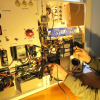
Learn Electrical Systems from Nigel Calder
Have you’ve ever wished you could immerse yourself in one of contributing editor Nigel Calder’s Professional BoatBuilder articles about onboard systems and ask him questions at the end of every… Read more »

Marine Trade Education News
Ferretti Group Adds Trade Schools The Italian luxury yacht builder, who owns upscale brands such as Riva, Ferretti, Italma, CRN, Wally, and Pershing, announced the opening of marine trade schools… Read more »

Life Raft Installation
Installing a life raft is straightforward but easy to get wrong—with dire results.

Recent Posts
- CTM Marine Prepares for Summer 2024
- Rybovich Refit Revisited
- Amphfoil marries Air Props and Hydrofoils
- There was Only One Partner I’d Trust for the Refurb Project of my Life: AkzoNobel
- Citimarine Store Expands to a New State of the Art Location in Miami
- Companies (86)
- Construction (107)
- Design (162)
- Drawing Board (11)
- Education (25)
- Environment (16)
- Events (21)
- Materials (50)
- Obituary (18)
- People/Profiles (49)
- Products (16)
- Propulsion Systems (33)
- Racing (16)
- Repair (37)
- Rovings (319)
- Short Cuts (3)
- Sponsored Partner News (17)
- Systems (80)
- Task Sheet (1)
- Uncategorized (26)
- Wood to Glass (7)
ProBoat.com Archives
- Shipping Companies
- Ship Designers
- Ship Handlers
- Shipping Agents
- Crewing Agents
- Universities
- Training Courses
- Steel & Materials
- Measurements & Tests
- Marine Engines & Gears
- Deck Machinery
- Pipes & Fittings
- Valves & Control
- Generators & Motors
- Electric Equipment
- Cables & Connectors
- Anticorrosion Systems
- Procedures & Conditions
- Painting Equipment
- Project Management
- Process Management
- Personal Accounts
ENGINE ROOM SYSTEMS AND LAYOUT
Engine room is the heart and muscles of a ship, providing necessary power and essential “fluids” for a modern vessel. Usually a merchant ship has propulsion and auxiliary power generators in engine room or dedicated compartments as for steering or separators. There are different systems and installations to keep vessel safe and running. They may differ from ship to ship so will mention few that can be found in most:
1. propulsion system
a. main engine(s) or turbine(s)
b. gear(s)
c. shaft line(s)
c. propeller(s)
d. CPP system
2. power generation system
a. auxiliary engines or turbines
b. shaft generator(s)
c. emergency generator
d. port generator
3. fuel systems
4. lubrication oil systems
5. cooling systems
6. heating systems (boilers, other heating systems)
7. gas exhaust systems
8. starting systems
9. bilge and ballast systems
10. ventilation systems
11. cargo systems (for liquid cargo)
12. domestic systems
a. fresh water system
b. seawater water system
c. waste system (black water, grey water, incinerator)
Not to forget all piping and electrical systems to be run in the engine room following all safety rules.
As you can see in the examples the arrangement of an engine room is similar to most ships when thinking to basic systems. Different parts of the systems are arranged and fixed using engine room horizontal and vertical space, on decks or platforms. All components and machineries have to be arranged in such a way to use at maximum their characteristics, to allow circulation spaces, servicing and dismantling/replacing spaces.
About specific systems, parts and components in next articles.
See also: B&W engine room layout
8 comments on “ ENGINE ROOM SYSTEMS AND LAYOUT ”
Good information is available at one place.
good information thank you
good information and help us to know the Maritime industry
Thank you, if you can improve it please let us know.
good information is given, but it require some more information!!
Definitely but please remember we make a living from consultancy. For more info contact us.Visit this page http://shipmind.net/marine-engineers
Pingback: Superfine Powder fire extinguisher in vessel engine room |
All Relevent datas at a single place
Leave a Reply Cancel reply
Required fields are marked * Your email address will not be published.
Usefull Links
- Tonnage Convention
- Panama Canal
- Bulk Chemical Code
© 2014 Shipmind.net Web Design by webdesignagecy.ro

Service Locator
- Angler Endorsement
- Boat Towing Coverage
- Mechanical Breakdown
- Insurance Requirements in Mexico
- Agreed Hull Value
- Actual Cash Value
- Liability Only
- Insurance Payment Options
- Claims Information
- Towing Service Agreement
- Membership Plans
- Boat Show Tickets
- BoatUS Boats For Sale
- Membership Payment Options
- Consumer Affairs
- Boat Documentation Requirements
- Installation Instructions
- Shipping & Handling Information
- Contact Boat Lettering
- End User Agreement
- Frequently Asked Questions
- Vessel Documentation
- BoatUS Foundation
- Government Affairs
- Powercruisers
- Buying & Selling Advice
- Maintenance
- Tow Vehicles
- Make & Create
- Makeovers & Refitting
- Accessories
- Electronics
- Skills, Tips, Tools
- Spring Preparation
- Winterization
- Boaters’ Rights
- Environment & Clean Water
- Boat Safety
- Navigational Hazards
- Personal Safety
- Batteries & Onboard Power
- Motors, Engines, Propulsion
- Best Day on the Water
- Books & Movies
- Communication & Etiquette
- Contests & Sweepstakes
- Colleges & Tech Schools
- Food, Drink, Entertainment
- New To Boating
- Travel & Destinations
- Watersports
- Anchors & Anchoring
- Boat Handling
Installing An Engine Room Camera
Advertisement
Keeping tabs on what's happening under the hood is easy when you have an engine-room camera.
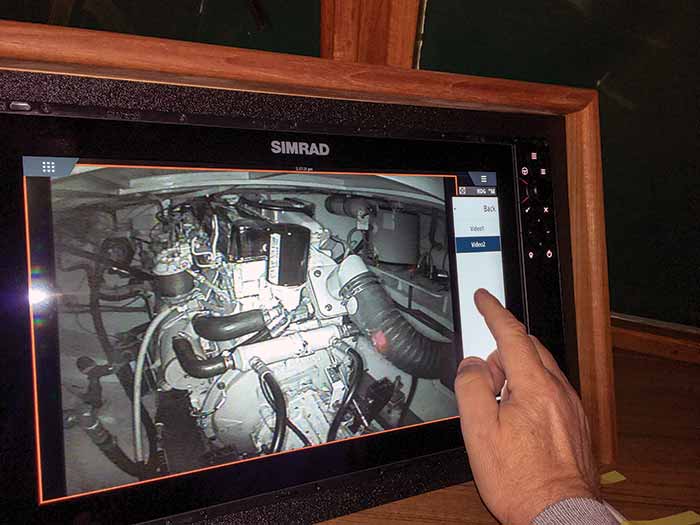
When I'm motoring, I like to check the engine room every hour or so. Having a peek at the beast in the bilge will often alert me to something wrong, long before it becomes a major issue or one of the alarms goes off.
My boat has two helm stations, one at the forward end of the main saloon and another on the flybridge. In good weather, I like to operate the boat from the flybridge, or as my family calls it, up top. This is great, but the helmsman is farther removed from the noise, smells, and other quirks of the engine room, so spotting something amiss is just that much harder.
I had often thought the idea of an engine-room camera would be an excellent idea for remote monitoring without physically lifting up the cabin sole, but the $400 price tag for a marine engine-room camera was a bit pricey. I then realized that a truck backup camera would be a far cheaper alternative. It even has UV LED lights, which illuminates the engine space when the hatch is closed. As long as your multifunction display (MFD) has a video input — most do — you're good to go.
I have a diesel engine, but if you have a gasoline motor, any electrical appliance that you use in the engine room, including a camera, needs to be ignition protected as per American Boat & Yacht Council (ABYC) and U.S. Coast Guard guidelines.
Jargon Buster
You'll often hear the term "chartplotter," and that's because a few years back when electronic charting first appeared, that's all it did — show the chart. Nowadays, chartplotters are capable of so much more, like displaying everything from a sonar chart, radar, engine gauges, and even controls for autopilot and stereo. Because of this, it is more correctly called a "multifunction display," or MFD for short, but lots of folks still call it a chartplotter!
In essence this project is fairly simple. The hardest and most time-consuming part is likely to be running the cables neatly, and that was certainly true in my case. All boats are different, but the principles are the same. Here's how I went about installing an engine room camera on my boat.
Technical Support
Degree Of Difficulty: Easy to moderate
- Screwdriver
- Cable clips
- Fuse holder
- Stainless screws
- Appropriate wire if needed for the extra wire run
Time: Depends on the difficulty of running cable. Mine took 4 hours.
Cost: Depends on the camera chosen. I spent $30 for a Camecho backup camera on Amazon. Additionally, I needed a special interface cable, which cost $40, to connect my MFD to the RCA connector.
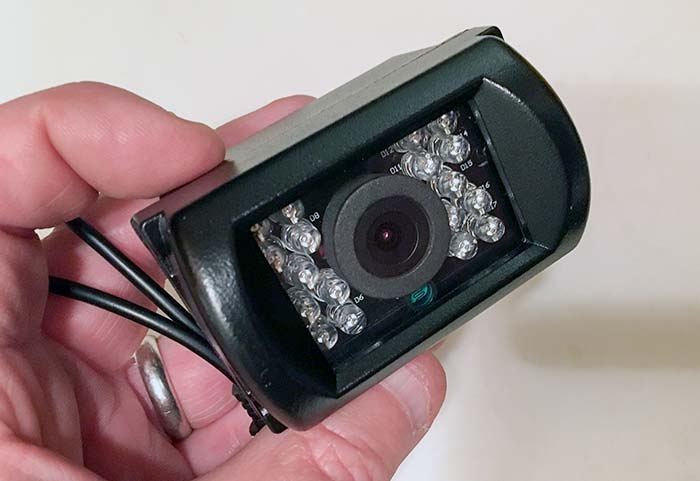
1. All cameras of this type have a wide angle of view, but I spent some time choosing the best spot to site the camera. I temporarily connected the camera to the MFD so that as I moved the camera, I could see how that affected what was shown on the screen.
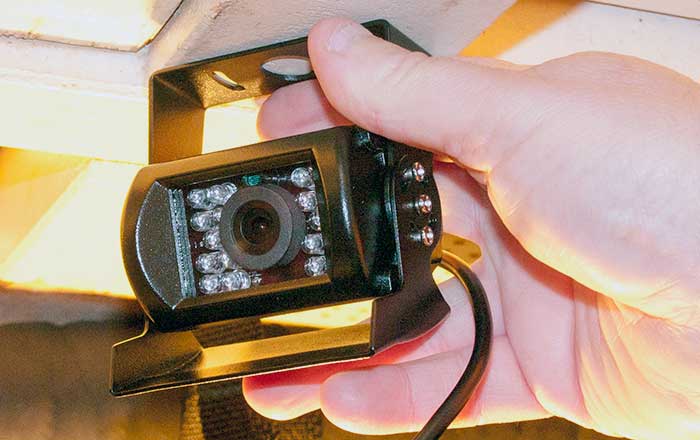
2. I chose a spot at the aft end of the engine room so I could easily see the transmission and engine. Had I mounted the camera at the forward end of the engine block, the view would have been obscured, and I wouldn't have been able to see the transmission.
With the location decided, I screwed the camera into position using some stainless steel screws. After a final check that the displayed image was correct, I disconnected the cables from the MFD and power supply and set to work on making a neat job of the installation.
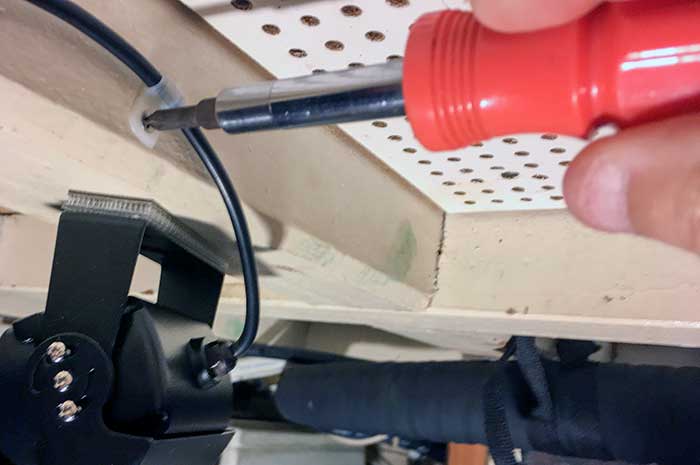
4. I routed the cables through to the MFD and made the final connections. It's perfectly OK to coil up any excess video feed cable, but for a neater job, cut off the excess and add a new RCA plug, which can be purchased for less than a dollar, either online or at a local electrical parts store. Note that unlike many transducer cables, it's perfectly fine to shorten the video feed to the MFD.
I have a Simrad MFD, so the RCA plug connects to a special adaptor cable that, in turn, plugs into the rear of the display. Other manufacturers may have proprietary adaptors.
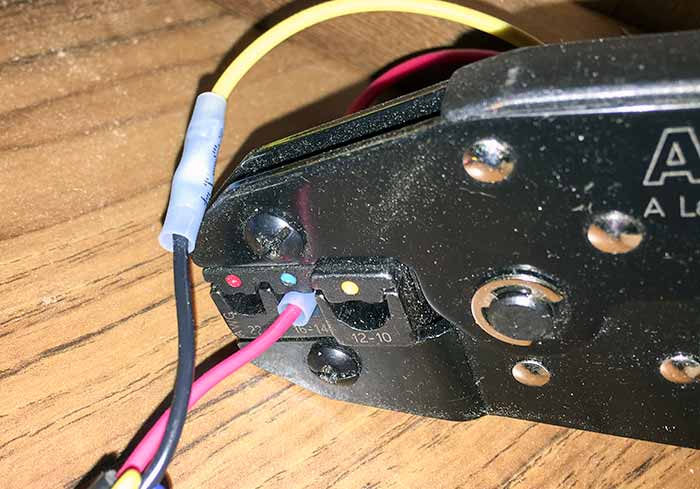
5. I also made the electrical connections that power the camera. The power consumption of cameras is modest, but you'll need to ensure that the circuit is protected with a fuse. I added an inline fuse holder complete with a 1-amp fuse as specified in the instructions that came with the camera and ensured connections were made using properly crimped connectors. Refer to the instructions that come with your particular camera for the exact fuse size you'll need.
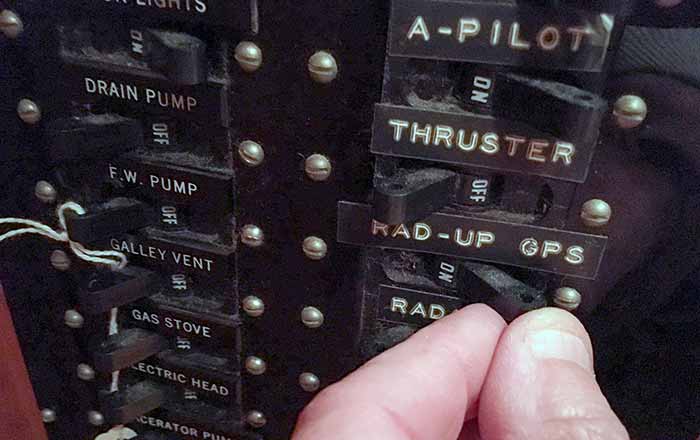
6. Double check all your work before turning on the camera , and then make sure that the image is showing correctly on the MFD display.
Connection Selection
Can I connect the camera to my chartplotter? The quick answer is probably. Many older units did not have the capability to connect a video camera, but units built in the last few years do. You'll need to check the owner's manual for your particular multifunction display (MFD) if you have any doubt.
Most connect with an RCA plug, which will either go directly into the rear of the MFD, or more often, the connection requires a unique lead, which in turn plugs into the back of the unit. This cable is often sold as an accessory by the MFD manufacturer.
Note, too, that connecting a video source to an MFD will allow it to play on that unit and only that unit. Although I have a fairly extensive suite of electronics on my boat with MFDs at both upper and lower helm positions, the camera image will only display on the MFD to which it's connected. If you want to see a picture on an additional MFD, as I did, you'll need to install an extra camera, but at $30 that's no big dent to my wallet. The only real downside is that you'll have to run an additional set of cables.
Related Articles
The truth about ceramic coatings for boats.
Our editor investigates the marketing claims of consumer-grade ceramic coatings.
Fine-Tune Your Side Scan Fishfinder
Take your side-scanning fishfinder off auto mode, and you’ll be spotting your prey from afar in no time
DIY Boat Foam Decking
Closed-cell foam flooring helps make boating more comfortable. Here’s how to install it on your vessel
Click to explore related articles
Contributing Editor, BoatUS Magazine
A marine surveyor and holder of RYA Yachtmaster Ocean certification, BoatUS Magazine contributing editor Mark Corke is one of our DIY gurus, creating easy-to-follow how-to articles and videos. Mark has built five boats himself (both power and sail), has been an experienced editor at several top boating magazines (including former associate editor of BoatUS Magazine), worked for the BBC, written four DIY books, skippered two round-the-world yachts, and holds the Guinness World Record for the fastest there-and-back crossing of the English Channel — in a kayak! He and his wife have a Grand Banks 32.
BoatUS Magazine Is A Benefit Of BoatUS Membership
Membership Benefits Include:
Subscription to the print version of BoatUS Magazine
4% back on purchases from West Marine stores or online at WestMarine.com
Discounts on fuel, transient slips, repairs and more at over 1,200 businesses
Deals on cruises, charters, car rentals, hotel stays and more…
All for only $25/year!
We use cookies to enhance your visit to our website and to improve your experience. By continuing to use our website, you’re agreeing to our cookie policy.
- New Sailboats
- Sailboats 21-30ft
- Sailboats 31-35ft
- Sailboats 36-40ft
- Sailboats Over 40ft
- Sailboats Under 21feet
- used_sailboats
- Apps and Computer Programs
- Communications
- Fishfinders
- Handheld Electronics
- Plotters MFDS Rradar
- Wind, Speed & Depth Instruments
- Anchoring Mooring
- Running Rigging
- Sails Canvas
- Standing Rigging
- Diesel Engines
- Off Grid Energy
- Cleaning Waxing
- DIY Projects
- Repair, Tools & Materials
- Spare Parts
- Tools & Gadgets
- Cabin Comfort
- Ventilation
- Footwear Apparel
- Foul Weather Gear
- Mailport & PS Advisor
- Inside Practical Sailor Blog
- Activate My Web Access
- Reset Password
- Customer Service

- Free Newsletter

Hunter 35.5 Legend Used Boat Review

Pearson Rhodes 41/Rhodes Bounty II Used Sailboat Review
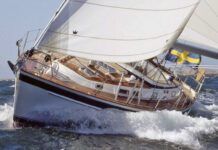
Hallberg-Rassy 42 Used Sailboat Review

How to Perform Your Own Pre-Buy Inspection

Thinking Through a Solar Power Installation

How Does the Gulf Stream Influence our Weather?

Can You Run a Marine Air-Conditioner on Battery Power?

Preparing Yourself for Solo Sailing

Practical Sailor Classic: The Load on Your Rode

Anchor Rodes for Smaller Sailboats

Ground Tackle Inspection Tips

Shoe Goo II Excels for Quick Sail Repairs

Diesel Performance Additives

What Oil Analysis Reveals About Your Engine

Painting a New Bootstripe Like a Pro

Penetrating Epoxy—Another Marketing Gimmick?
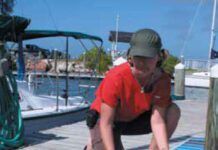
The Best Tools for Bottom Painting

The Hidden Maintenance Problems That Can Ruin Your Day: Part 1

Alcohol Stoves— Swan Song or Rebirth?

Living Aboard with an Alcohol Stove

Choosing the Right Fuel for Your Alcohol Stove

How to Select Crew for a Passage or Delivery

Preparing A Boat to Sail Solo

Re-sealing the Seams on Waterproof Fabrics

Waxing and Polishing Your Boat

Reducing Engine Room Noise

Tricks and Tips to Forming Do-it-yourself Rigging Terminals

Marine Toilet Maintenance Tips

Learning to Live with Plastic Boat Bits
- Systems & Propulsion
- Inside Practical Sailor
Reducing onboard noise requires a multi-faceted approach.

Of all the health reporting that has been featured in the news recently, the theme of ambient noise is one that resonated strongly with me (pun intended). According to the reports, people are spending more time at home–or on their boats–and have become more aware of the ambient noise that fills the spaces where they live and work (which for many of us is now one and the same).
Some office workers can’t seem to get comfortable working at home without the thrum of activity. Others, like me, are suddenly becoming aware of how the noises of our lives and livelihoods have taken a toll on our hearing. I don’t know if it is something in the air, but three readers contacted me this week regarding noise control on their sailboats.
One reader asked about ways to dampen the slap of water on a counter stern, a rare problem, but one I’ve heard of before. The other two readers faced a more common problem—engine noise. In either case, the noise can be much more than just an inconvenience.
The long-ranging impacts of daily noise are explored in a wonderfully disturbing book by David Owen ” Volume Control: Hearing In A Deafening World .” The most important lesson I learned from Owen’s book and from other similar investigations is that the noise regarded as offensive can vary greatly between individuals.
A relatively young field of health research in hyperacusis — extreme sensitivity — explores why some frequencies and pitches are actually quite painful for some individuals. As researchers are discovering, some noises may actually be quite personal — associated with traumatic events of our past — which is why they impact us in ways that they don’t seem to impact others in our circle.
So, if your sailing partner complains about a noise that doesn’t really bother you, it might not necessarily something that they can just “get used to.” You will have to address it through active sound reduction measures.
The good thing about sailing is that for most of us, the ambient sounds of water are actually quite soothing. While we’ve not explicitly looked at ways to reduce splashing noises, we have explored the various materials used to insulate our boats and engine rooms, including a test of 10 different boat noise insulation products. Many of the manufacturers in that test are still active today, and the products are relatively unchanged despite the passage of time, and one of the most prominent players in our last test, Soundown , is still regarded as a leader in the field.
A little more recently, we’ve also tested noise insulating paint, and in 2017 we looked at below-the-waterline hull insulation products that will also help with sound dampening. Another important source of onboard noise is engine and drive-train vibration, something that high-latitude adventurer Andy O’Grady explored in the Cruising Sailor’s Drive Train. Although we’ve not compared flexible couplings like the popular Drive Saver, we have reported on it generally in field reports and in a Practical Sailor Advisor question about flexible couplings .
For those who are exploring way to silence your engine, I’ll reiterate some points here from our previous reports, including a Practical Sailor Advisor article on building an insulated engine box .

Engine noise
Engines make noise. Crew – especially when they’re trying to hold a conversation, sleep, or just relax – don’t like noise. The solution? Isolate the crew from the engine noise and vibration.
Noise and vibration are inseparable. Noise exists because vibration causes variations in the air pressure that reaches the ear. This is perceived as sound. An effective control deals with both the vibration and the airborne noise.

Measuring Noise
Noise levels are measured in decibel units, usually referred to as dBA (the A denoting that the measurement is adjusted for the frequency response of the human ear, rather than the total sound level energy). Everyday sounds fall into a range from roughly 25 dBA (a suburban bedroom at night) to 100 dBA (a chainsaw at a distance of 3 feet).
A sensitive ear can distinguish differences of 1 dBA, but it takes a 5-dBA difference to be noticeable. On a boat, an unshielded diesel genset will produce sound levels of 100 dBA at 3 feet; an inboard typically raises the noise in the engine room to about 110 dBA. The object is to drop those levels to approximately 75 dBA for more-or-less normal conversation, and another 20 dBA for comfortable sleeping with the engine running.
There are three basic approaches to making your boat quieter. The first step is to use flexible mounts to isolate the vibrating machinery from the hull. These help prevent the transmission of vibration through the solid structure of the boat, and the consequent reverberation of hull sections that can act like amplifiers. Correcting any engine-shaft misalignment will certainly help.
The next step is to surround the noise-producing machinery in a tight, insulated enclosure to reduce air-transmitted noise.
The final step is to line enclosed living quarters, such as cabins, with sound-absorbent materials.
Vibration Noise
Once you’ve reduced vibration and the associated structure-transmitted noise, you’re ready to deal with airborne noise. The first step is to enclose the noise-generating components-the engine-in some sort of box or compartment. Almost any sort of enclosure will reduce noise levels by 5 to 10 dBA, but improving on that takes an understanding of the nature of noise.
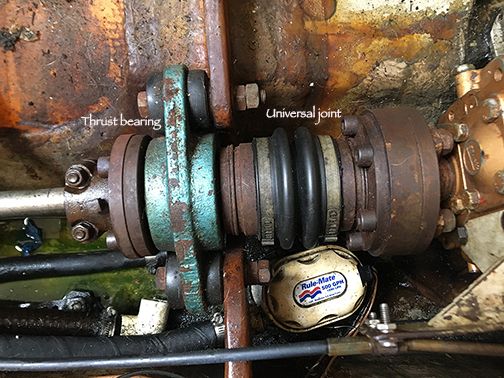
The 5-10 dBA reduction that comes from putting the engine in a box is due almost entirely to the sound energy absorbed by the box; most of the noise is transmitted right through the box’s walls. Reflection may have some value in some situations, but reflecting sound waves back into an enclosure simply makes it noisier inside the enclosure. A reflective material works when there’s somewhere to reflect the sound.
Sound, after all, is a form of energy, and you can’t just make it vanish. You can, however, convert sound energy into another form of energy-heat. The energy dissipates when the absorbent material becomes displaced or compressed.
Energy Absorbing Materials
The amount of energy absorbed depends upon the mass (or weight) of the material, how far its displaced or compressed, and the material’s damping capability. Materials like lightweight foams and fiberglass wool have good damping but not enough mass to be effective by themselves. They have a role in dealing with noise, insofar as they can reduce reflection. More specialized sound-absorbers are more effective. These are composite materials with a high-mass layer, one or more damping layers, and (usually) a thin plastic film at each face to protect the damping layer(s) from mechanical damage and moisture.

The high-mass layer should be heavy, limp, and nonporous. It should also be as thin as possible, simply because space aboard is usually at a premium. A sheet of lead works best, but a lead-filled sheet of plastic can be used where a physically tougher material is required. Mass layers of lead typically weigh 1-2 lbs. per square foot; lead-filled plastic weighs about half that for an equivalent thickness.
On either side of the mass layer is a layer of foam or fiberglass mat. The layer facing the noise source is called the absorption layer; its function is to dampen out the vibrations caused by the movement of the mass layer. On the other side of the mass layer is an outer layer of foam or fiberglass: the decoupling layer. It isolates the heavy layer from the engines enclosure.
The range of frequencies that a sound-isolation material can deal with effectively varies with the product of the square root of the weight of the mass layer and the thickness of the decoupling layer. Thus, a 1-lb. per sq. ft. barrier on a 1/4-inch decoupler might only be effective in dealing with high-pitched sounds (500 Hz and higher); doubling both the weight and the thickness extends the useful frequency range to 125 Hz.
Calculating Decibel Reductions
Reductions in dB are additive. Let’s say an unshielded engine produces a noise level of 110 dBA. If we build a box from 5/8-inch plywood around the engine, wed lower the sound level (measured at 1 foot) to roughly 100 dBA, assuming that the box doesn’t leak and that all openings are taped. If the vent openings to the box lead overboard rather than into the cabin, you can reduce noise by another 15 dBA or so. Make sure that your vent ducts are baffled, or make up a labyrinth with several 90-degree turns.
The value of turns in baffling sound is explored in greater detail in our report on silencing Perkins 4-236 , an engine that was introduced before much of the current research on noise reduction had started. As that report on building an engine box for a marine diesel describes, simply modifying the air filter design on the Perkins 4-236 can greatly reduce engine noise.
If you line the box and the vent ducting with a simple absorption layer of fiberglass or foam, you’d only lower the noise level outside the box by 5 dBA or so, even if you used a thick layer of sound-absorber. If you lined the box with a composite material (1-lb./sq. ft. mass layer, 2″ thick overall), you’d get the noise level from the box down to a bearable 76-78 dB, or 61-63 dBA if the engines air vents are ducted overboard.
Building a Sound Enclosure
Remember when measuring for engine box size, be sure to leave plenty of room for clearance. As a rule of thumb, Soundown suggests six inches of clearance around the engine, although this isn’t always possible. One common complaint is foam insulation degrading and clogging air filters.
The other challenge is insulating under the engine, where noise will also transmit. Fortunately, there are a variety of different water- and oil-resistant products that you can use to construct sound-attenuating baffles under the engine to transmit the noise through the bilge, but then you will almost surely need a blower to meet ventilation needs.
Don’t forget, that engine needs ventilation both for cooling and for combustion intake. Depriving it of air can lead to reduced power, engine damage, or worse. Anyone contemplating an engine enclosure should consult the relevant chapter of the American Boat and Yacht Councils Technical standards ( www.abyc.org ), as well as the engines manufacturer to determine ventilation requirements. As pointed out in our report on building a sound enclosure for a marine diesel , a powerful blower will often be required to ensure plenty of fresh air reaches to the engine.
So, how quiet can your cabin get? The actual noise level in the cabin will depend on the distance between the engine box and the cabin; sound levels drop by 6 dBA each time you double the distance from the source. If the berths are close to the engine, you can also apply absorbent material to the cabin ceiling and walls (1/2 to 1-inch foam-backed fabric and perforated vinyl headliners are popular choices). If you find that noise is coming up through the floor, try noise-absorbing carpet. As a bonus, these materials are also good thermal insulators.
Of course, the easiest solution to reducing engine noise is to turn the beast off and sail.
RELATED ARTICLES MORE FROM AUTHOR

Worship Your Universal M-Series Diesel With the Marinized Kubota Block
10 comments.
Please consider rock wool insulation. Unlike lead, it isn’t toxic. Unlike foam, it won’t burn. And unlike fiberglass, it won’t melt. It’s cheap and can be purchased at most home improvement stores.
Another option would be to add more insulation material to the outside of the engine enclosure. A couple inches inside, a hard layer (fiberglass enclosure), and then two more inches outside where possible should more than double the attenuation at those areas. That sound that does escape to the cabin may actually increase in volume as it reflects around the cabin interior, so more insulation could be added there if desired, especially in any corners, as we do treating interiors of recording studios. Those low rumbling frequencies won’t bounce too much as they’ll pass right through the boat. But a “standing wave” between 125 and 250 hz can bounce enough to actually increase in volume after leaving the engine space. Corner absorbers are sold often for such purposes, and homemade solutions abound.
Rock wool doesn’t work well on low frequencies but it is useful packing large voids such as I have aft of the motor. It’s fire proof and will drain any water incursion. Back to cases: I have a very convoluted complex engine compartment (Cap Dory 25D) and had to first create the “box” using thin ply, a hot glue gun, and spray foam to seal all of the openings to fore and aft compartments(it does have exterior vents). Because of the irregularity of shapes peal and stick automotive sound deadening (Kilmat) worked well and can be doubled. It does not work as well on low frequencies as I had hoped. Interestingly the most attenuation occurred when the area under the engine was covered. Very labour intensive.
You have omitted the single most effective solution:
Pull the engine and install electric drive.
Perhaps there is another post on this – but – I have a new to me Catalina 42 with a loud fresh water pump. It is mounted with rubberized mount. It is located in a relatively spacious behind the engine compartment. Is it ok to ‘wrap’ the pump in some of the mentioned insulation?
“a Sheet of Lead”…? Really??…Once Again, A long winded Article that doesn’t Address the Title of” Reducing Engine Room Noise”….Nothing is Mentioned of SOUND DEADENING MATS, FatMat RT50 Rattletrap Sound Deadener, for Example, Or any Automotive Product that is designed just for this purpose. I am more interested in a Solution, than learning how to Calculate Decibel Reductions.
Excellent article on the conventional approaches that can be taken to effectively control noise. A less conventional, higher-tech solution is “Active Noise Cancellation” (ANC). While this will not be of use to most DIY sailing types, it has been demonstrated as extremely effective in both automotive and aerospace applications (reducing max noise levels in the order of 10 dBA). ANC is particularly well suited to engine noise, as it is “deterministic”, meaning a known function of the operating rpm. This allows generation of a sound wave 180° out of sync with the source noise with speakers or electromagnetic shakers, thus cancelling it (within practical limits). As mentioned, not practical for typical sailors, but undoubtedly applicable to megayachts. Peaceful sailing!
I wonder if this is correct: “The actual noise level in the cabin will depend on the distance between the engine box and the cabin; sound levels drop by 6 dBA each time you double the distance from the source.” Isn’t that the noice drop with distance in open air? In an enclosed cabin, you have resonant materials and sound reflection & reinforcement. You can move from a low resonance spot near the noise source to a high resonance spot farther from the noise source – in which case the noise level will go up, not down.
Yep, that measurement is for a non acoustical environment, often used to rate loudspeaker efficiency. It’s not an accurate measure for reflecting/bouncing sound. Decoupling, air space, mass, are the most effective things, in layers. Lead is very effective in sheet form, if decoupled from the vibrating source. Sailing does solve it well.
Put a generator in a dingy and tow 100′ behind you with an extension cord as a tow line feeding power to an electric drive engine.
LEAVE A REPLY Cancel reply
Log in to leave a comment
Latest Videos

An Italian Go Fast Sailboat – The Viko S 35 |...

What Is The Best Folding Bike For Your Sailboat?

The No Expense Spared Antigua 60 Cruising Sailboat Soolaimon

How To Buy Sails – With Joe Cooper
- Privacy Policy
- Do Not Sell My Personal Information
- Online Account Activation
- Privacy Manager
- Contact SDMC
- Vessel Selection Assist
- Pre- Purchase Guidance
- Building Your New Vessel
- Equipping Your New or Pre-Owned Vessel
- Boat Owner and Buyer Articles
- Testimonials
- Boat Buyers Gallery
- Captains’ Club
- Ready for Sea
- Refitting & Repairing Your Boat
- Vessel and Systems Inspection
- Boat Owners Gallery
- Industry Consulting
- Industry Articles
- Industry Gallery
- Educational Videos
- About Steve
- Upcoming Events
- Photo Gallery
- Travelogues
- Seaworthy and Challenges
- SDMC Lecture Offerings
- Sample Inspection Reports
- SDMC Webinar Lecture Series

- Marine Systems Excellence eMagazine
Engine Room Inspection – Editorial: Cruising the Columbia River
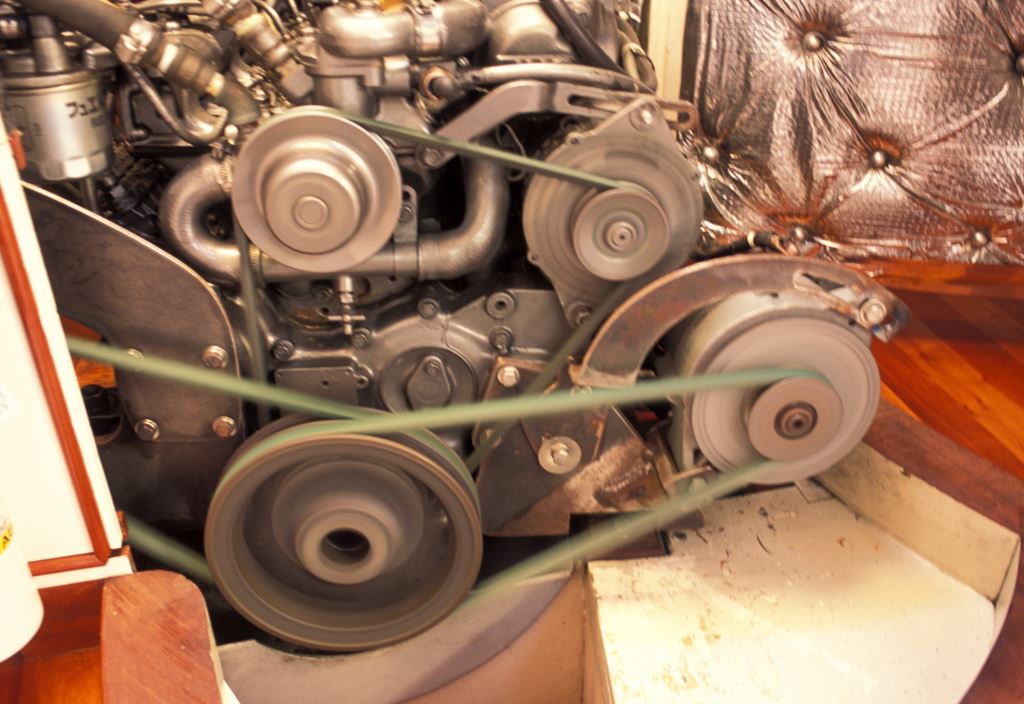
Text and photos © 2021 Steve D’Antonio Marine Consulting, Inc.
From the Masthead
I’m writing this column, while lying alongside a dock in Portland, Oregon, having just completed an eight-day passage from Kennewick, Washington, via the Columbia River. The trek took us through a range of topography and climate, from brown, arid desert hills, where the temperature exceeded 117°F (47°C), to temperate, wet, misty and very verdant rain forest, whose “chilly” 60°F (16°C) temperature proved a welcome respite to the crew. It represents my first “desert cruise”. We passed through four locks, each associated with a dam, with river conditions ranging from glassy calm, to 40 kt winds and three-foot waves.

While not without their controversy, the locks and dams represent incredible engineering marvels, to see, and use them up close, was a treat for this gearhead. The total drop from Kennewick to Portland, via the McNary, John Day, The Dalles and Bonneville Dams/Locks, is an impressive 340’ (102m).

Wildlife is abundant, including deer, turkey, a variety of fish including salmon and sturgeon (a “prehistoric” fish that has no scales and looks the part, they are North America’s largest and longest-lived freshwater fish, reaching a maximum size of 19 feet (6m) and1,800 pounds (800 kg)) eels, bats, pelicans, swallows and a range of other birds.

Of course, if you are an American history enthusiast, and I am, you’ll know that the Columbia River represents the final leg of the epic Lewis and Clarke expedition, an event in which the entire region is steeped. A day driving trek to Mt. Hood’s historic Timberline Lodge, a 1930’s WPA project, added yet another dimension to this otherwise waterborne passage.

Entering Portland means a return to civilization, my least favorite part of any passage, however, it also means returning to my home and family. Cruising in this manner, by small vessel, close to the surface, and anchoring in remote bays and coves, brings one closer to the land and its inhabitants, those of the two and four legged, as well as winged and scaled, variety. I can think of no better way to travel.
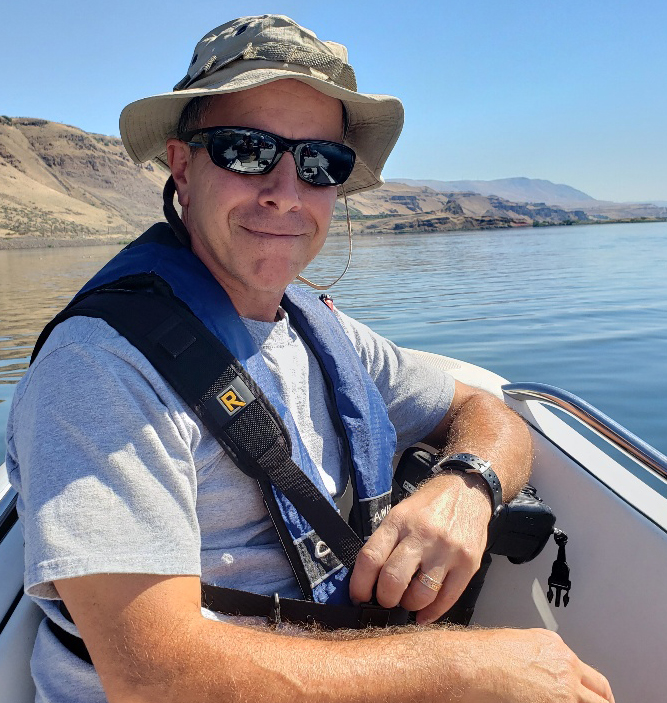
This month marks the return of the Marine Systems Excellence eMagazine, from my crunched schedule-induced hiatus. The feature covers the subject of engine room checks, I hope you find it both useful and interesting.
Engine Room Inspection
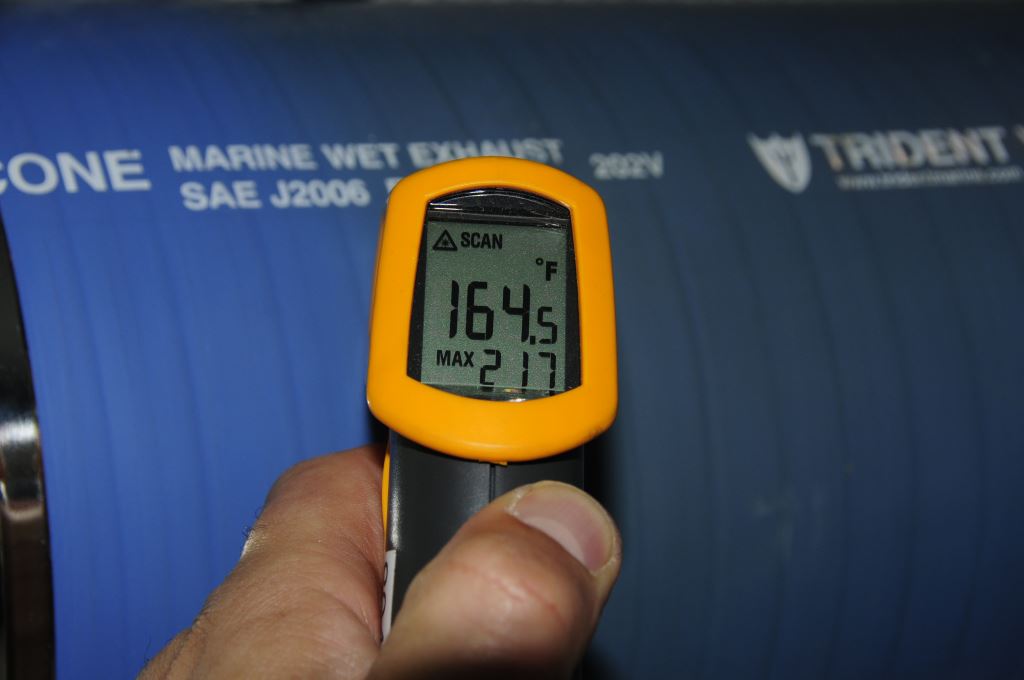
No part of an exhaust system that can be touched should exceed 200°F (93°C). The one shown here is too hot.
When two clients ask me, in the same week, if I’ve written an article on a particular subject, I pay attention. In both cases I’d recently completed reviews of their vessels, one in-person, for a 17-year owner, and the other remotely, for a foreign buyer. During the ensuing discussions a range of subjects were covered, from correcting defects, to improving the safety, reliability or operation of specific systems or components, which eventually led to, “what do I look for when checking the engine room while underway?” question.
Engine Room Round Robin
There are two kinds of engine room inspections, one is static, and performed while dockside with the engines and genset stopped, while the other is underway, with engines and other gear running. In this article I’ll cover the underway inspection.
Before venturing into the engine room, make certain you are properly prepared, this includes eye (I wear reader safety glasses whenever I work, and especially around moving machinery, hot coolant, oil and hydraulic fluid etc.) and ear protection, while ensuring you are wearing no jewelry that can catch on machinery or conduct electricity, which includes metallic rings and watch bands, and you have no loose clothes, drawstrings or exposed ponytails. I make it a point to wear shoes in machinery spaces, even if the boat is shoeless, as they offer better footing, while protecting my feet and especially toes.
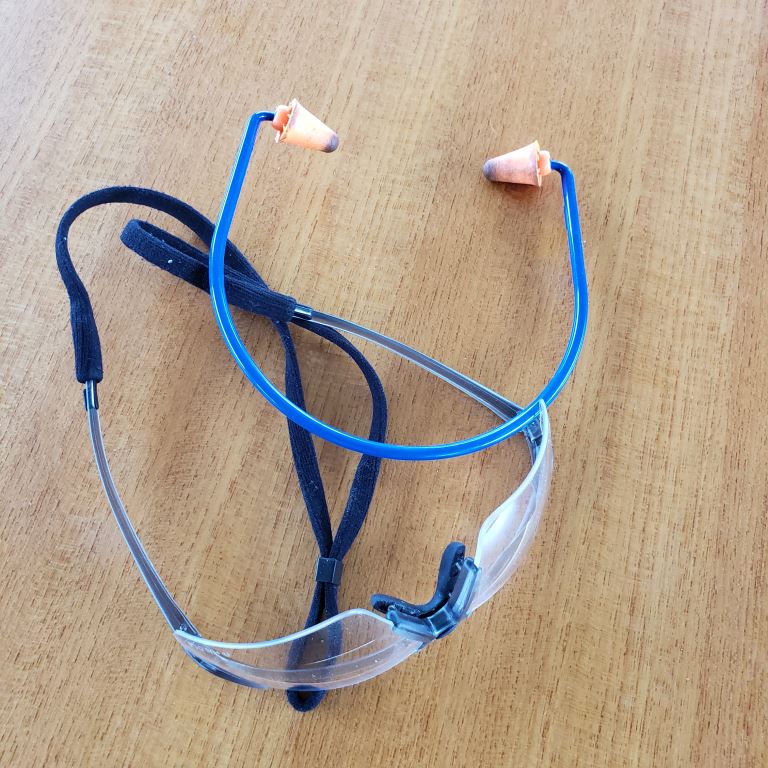
Both eye and ear protection are mandatory for working in engine rooms.
A few years ago, while performing an underway inspection in stocking feet, I slipped on a slick gelcoated deck, and my foot made contact with the rotating shaft coupling, which was equipped with a safety wire-secured set screw. The sharp edge of the wire caught my sock, yanking it cleanly off my foot. I was unharmed but it left me startled, with a lesson learned about being barefoot in the engine room. On one occasion, while conducting an engine room inspection, just as I was about to close the door behind me, a coolant hose separated from a pipe adapter (it was in fact a threaded pipe nipple, which is inappropriate for terminating hose), which immediately released the entire contents of the engine’s cooling system and keel cooler, gallons of 195°F (90°C) coolant and vapor. After that sobering episode, I vowed to always wear safety glasses in engine rooms.
If that lesson isn’t clear enough, I’ll reiterate; you must remain alert while performing these underway inspections, especially while you are near moving machinery such as belts, pulleys and propeller shafts, and hot parts, including the dry exhaust, turbo-chargers and turbocharger charge air plumbing. A misplaced finger, hand or forearm could end in a nasty burn or an amputation, I’ve experienced the former first-hand, and witnessed the latter, when momentarily blinded mechanic (he had just come from bright sunlight) lost his thumb after inadvertently placing it between a turning belt and pulley.

Many older engines do not utilize belt guards; exercise extreme caution around these, especially in a seaway where it’s easy to be thrown off balance.
The tools that are needed for an underway engine room inspection are simple and inexpensive, an infrared (IR) pyrometer and a small flashlight. While the order of the items you inspect isn’t especially important, it makes sense to do so in a geographically logical manner, i.e., if you make a circuit around the engine room, inspect each item as you come to it, avoiding backtracking, and then make that your route every time thereafter. Once that route is established, prepare a checklist that you can follow, at least initially, as a prompt, to prevent you from missing anything. For more on infrared pyrometer use, see this article .
What to Check
Coolant: I’m a big fan of coolant recovery bottles, they serve as excellent visual status indicators for an engine’s cooling system. If your engine doesn’t have one, in most cases it can be added. Using tape, mark the level in yours when cold, then again after the engine has reached its full operating temperature and has been running for at least an hour. These two indicators will provide a quick visual reference, the coolant should return to these two marks when cold and hot, if it doesn’t, you’ll know right away something is wrong. For more on coolant recovery bottles see this article .
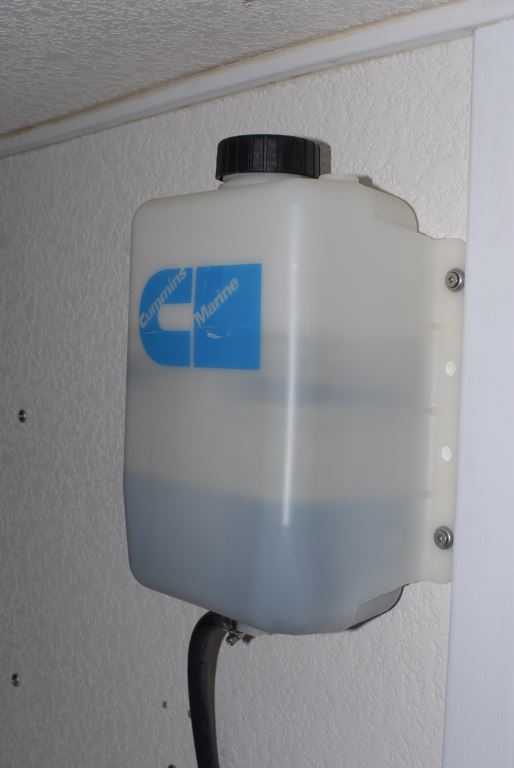
Coolant recovery bottles are windows to a vessel’s cooling system, ideally their hot and cold level should be marked with tape.
If you know where your engine’s coolant temperature sender is, using your IR gun check that, as this will confirm your gauge reading is accurate. It should be within about 5°F (3°C) of the gauge on the instrument panel.
Alternator(s): If your vessel has the ability to monitor alternator output specifically, using an ammeter for instance, you should make that part of every engine room check, even if the gauge is somewhere other than the engine room. It’s important to note, if you are underway, with a genset running, which in turn is powering a battery charger, it’s very possible that alternator output will drop, potentially to zero. This is entirely normal, as the alternator’s regulator “sees” the higher voltage supplied by the battery charger, which signals it to reduce or eliminate its own output. Beware, however, this scenario can mask a non-functioning alternator, and as such it’s important to periodically confirm alternator output with no other charge sources present. If your vessel is not equipped with an alternator ammeter, then you should consider confirming alternator output using a digital multimeter that is equipped with an amp-clamp. While many engine instrument panels will measure voltage, or net amperage, it is not a completely reliable means of confirming proper alternator function, as that volt meter will register voltage and current from any source, a battery charger, inverter charger, solar panels, or even another engine’s alternator if the two are paralleled, which is connected to the same battery as the engine/alternator. More on multimeter selection and use in this article .
While on the subject of alternators, their temperature should be measured using your IR gun, or a permanently-installed probe associated with a vessel monitoring system, or the wired remote probe from a digital thermometer. The hottest portion of an alternator is usually the stator, essentially the center of the barrel-shaped portion. Squeeze the IR gun’s trigger and while doing so wave it over the entire body of the alternator, while holding it as close to the alternator as possible (again, be mindful of moving belts, pullies and the fan). This scan feature will yield the highest temperature.
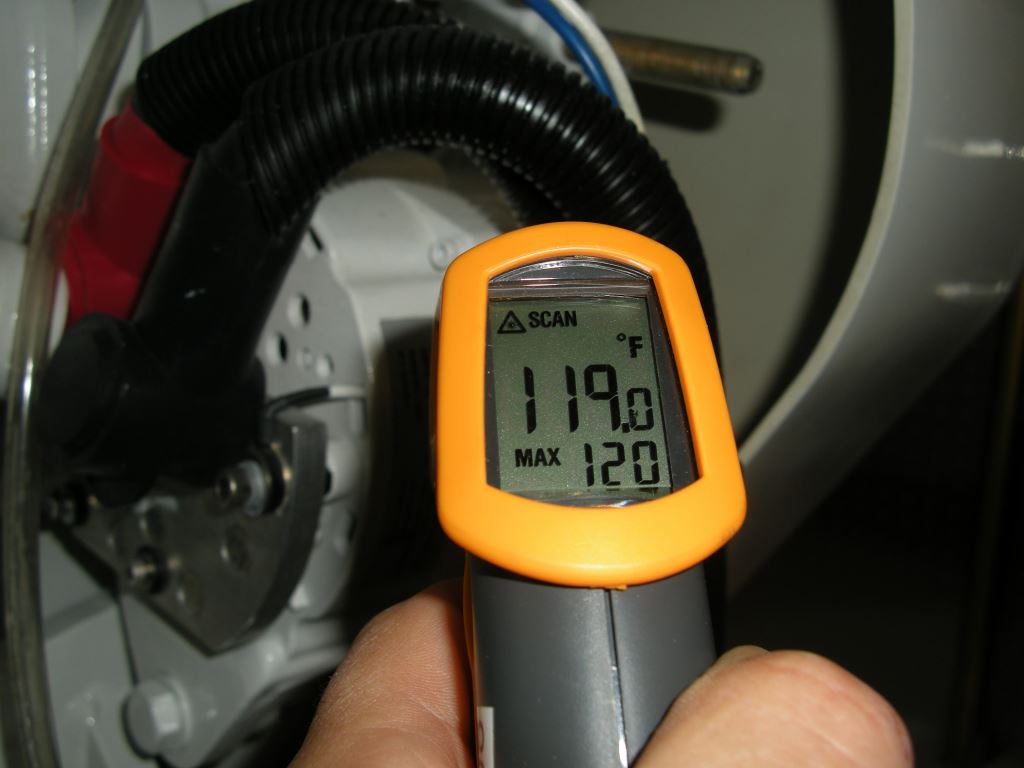
Alternator temperature should be checked at the hottest section, typically the stator, preferably while it is heavily loaded.
While it varies from manufacturer to manufacturer, typically, large frame, high output alternators designed for continuous duty can endure temperatures as high as 300°F (149°C) for short periods, and up to 240°F (116°C) for longer stints.
Belts: If visible, carefully eyeball your belts, idlers, sheaves and tensioners, as well as the area directly below the front of the engine, for generation of excessive dust. The only way to know if your belts are generating dust is to keep the front of the engine clean. If it’s caked with years’ worth of accumulated belt detritus, and oil, you’ll have no way of knowing if this the legacy of a since corrected problem, or if it’s newly generated. For more on belts, see this article The belt analysis is best conducted at rest.
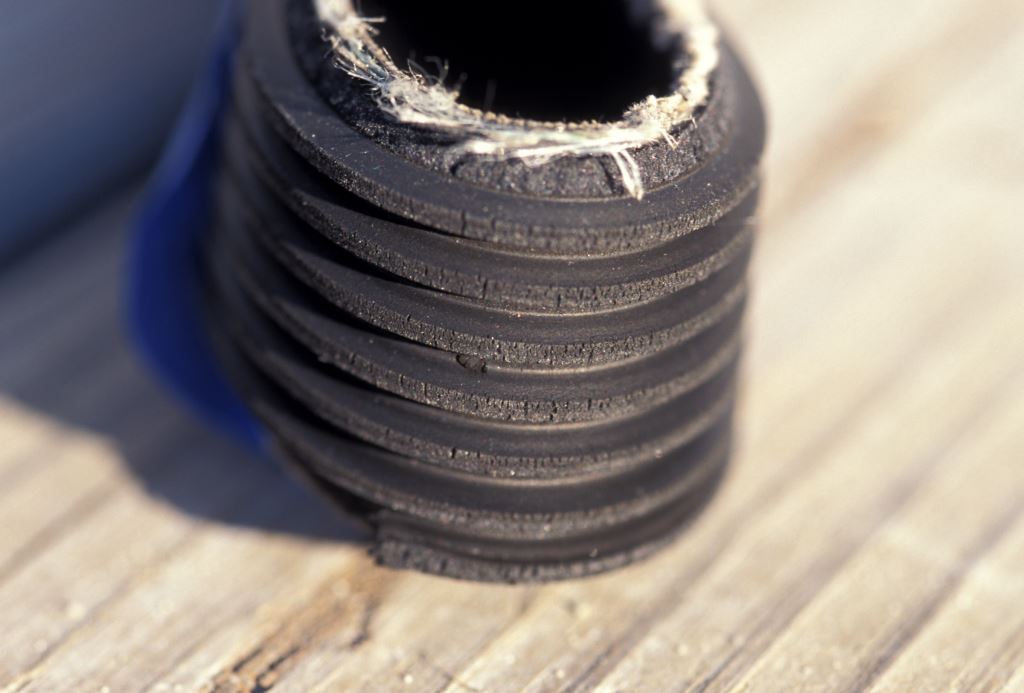
Belts have a finite life; this one is well past its replacement interval. However, the white filament is also a telltale sign of a worn tensioner pulley.
Exhaust: The engines dry exhaust system, the portion between the engine’s exhaust manifold or turbo-charger and seawater injection point (or the whole accessible run if it’s a dry exhaust vessel), should be monitored using your IR pyrometer. Beware, while IR pyrometers are generally very accurate, they can be fooled by highly reflective surfaces like polished stainless steel, chrome and foil-faced insulation; the latter is commonly used on dry exhaust systems. In that case, areas where you intend to measure can be painted with flat black paint, or black tape can be applied, a small square is all that’s necessary. The ABYC Standards mandate that if your measurements exceed 200°F (93°C), on any portion of the exhaust system you can touch, they are too hot; they must either be insulated more effectively, or guarded to prevent contact.
Be sure to check the turbo-charger; “dry”, non-liquid cooled turbos must be insulated, as well as the flange between turbo and exhaust riser, in many cases it is entirely exposed. I’ve measured some of these at over 500°F (260°C).
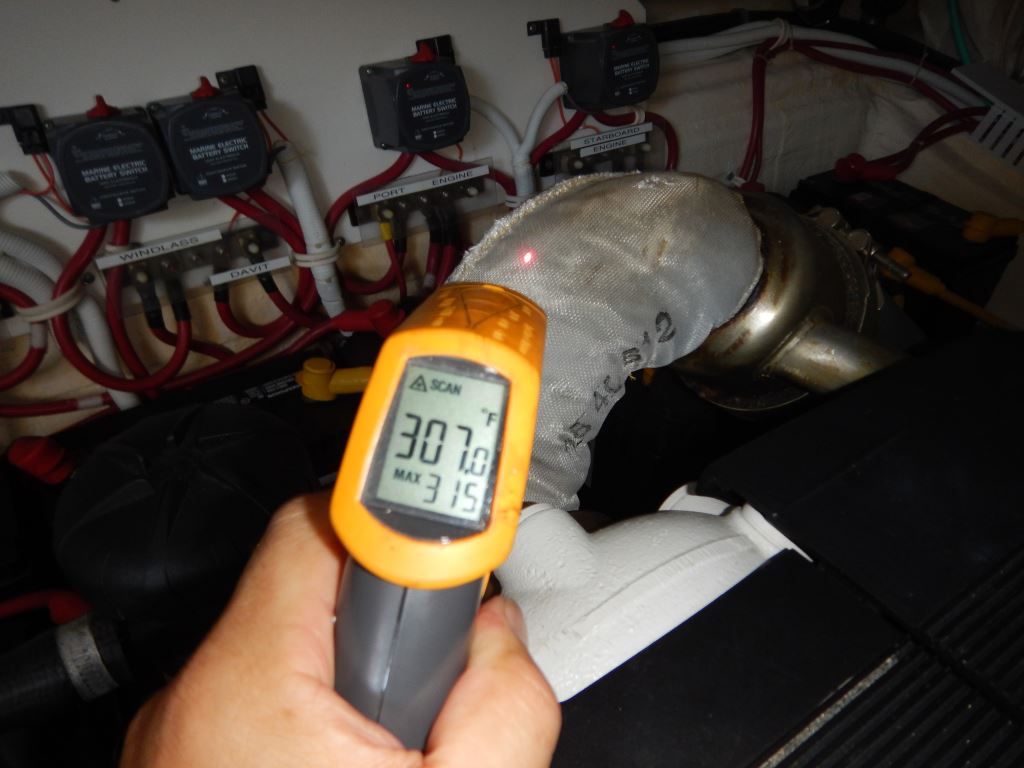
The temperature of wet exhaust systems should be checked through the full range of operating rpm, they will often run hotter at lower speed, when less water is pumped into the system.
As a side note, even if adequately insulated, an underperforming engine room ventilation system can lead to overly hot dry exhaust surface temperatures. The reason for this phenomenon; if there is insufficient air turnover, then heat cannot be carried away from these surfaces rapidly enough to maintain the required sub-200°F (93°C) temperature. For more on engine room ventilation see this article .
From here move on to the wet portion of the exhaust system. Measure the hose immediately after the mixing elbow, especially on the top or 12:00 o’clock position, as that’s likely to be hottest. Counterintuitively, the highest temperature may be reached at lower speeds, idling even, when less water is being injected into the exhaust system. Again, no portion of the wet exhaust system should exceed 200°F (93°C); typically, it’s closer to 130°F (54°C). One of the more popular wet exhaust temperature alarms, an indispensable component on any inboard-powered vessel, triggers at 165°F (74°C). For more on those see this article .
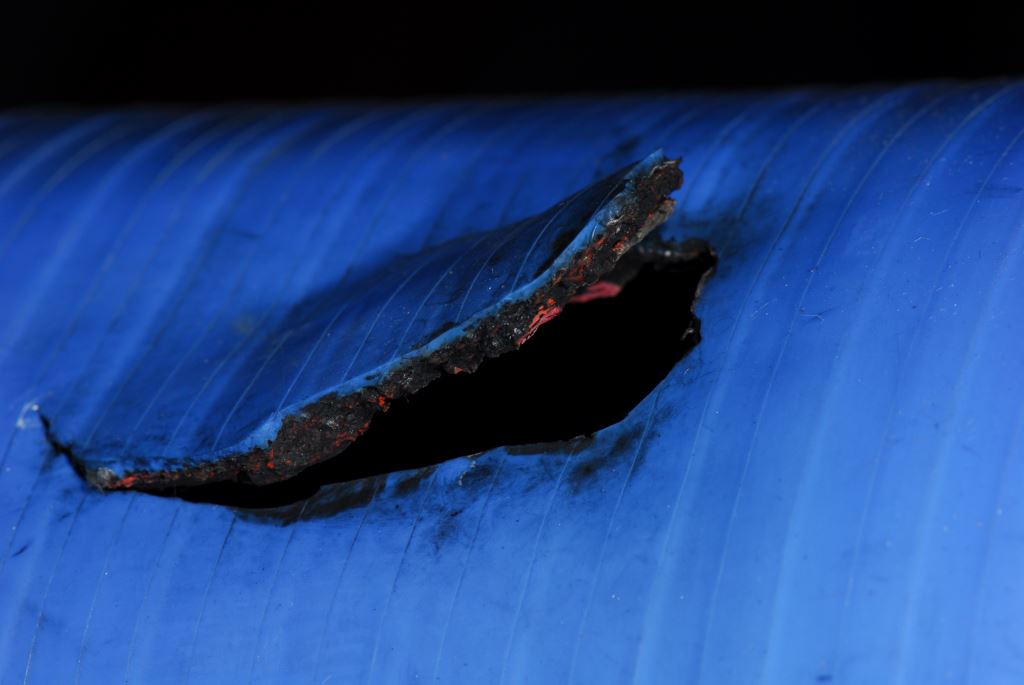
Chronic wet exhaust system overheating can lead to hose failures, and even silicone hose is not immune to very high temperatures.
Engine Room and Related Temperatures: Measurement of engine room temperature is an important metric for determining the efficiency and adequacy of the space’s ventilation, be it passive or active. Measuring this in different locations will yield different results, however, most engine manufacturers specify a maximum allowable difference in temperature, a ‘delta T’, between the engine air inlet, typically measured at the air filter, and ambient, the air outside the vessel (the outside temperature must be measured in the shade). While Cummins and John Deere specify 30°F (17°C), Caterpillar’s requirements, as well as those of ISO 8861, are more stringent, they call for a maximum delta T of 22.5°F (13.5°C). If engine air inlet, and thus engine room, temperature is too high, the engine efficiency can suffer. However, a more insidious side-effect involves the accelerated deterioration of a variety of engine room components, including hoses, insulation, plastics and electrical/electronic components.
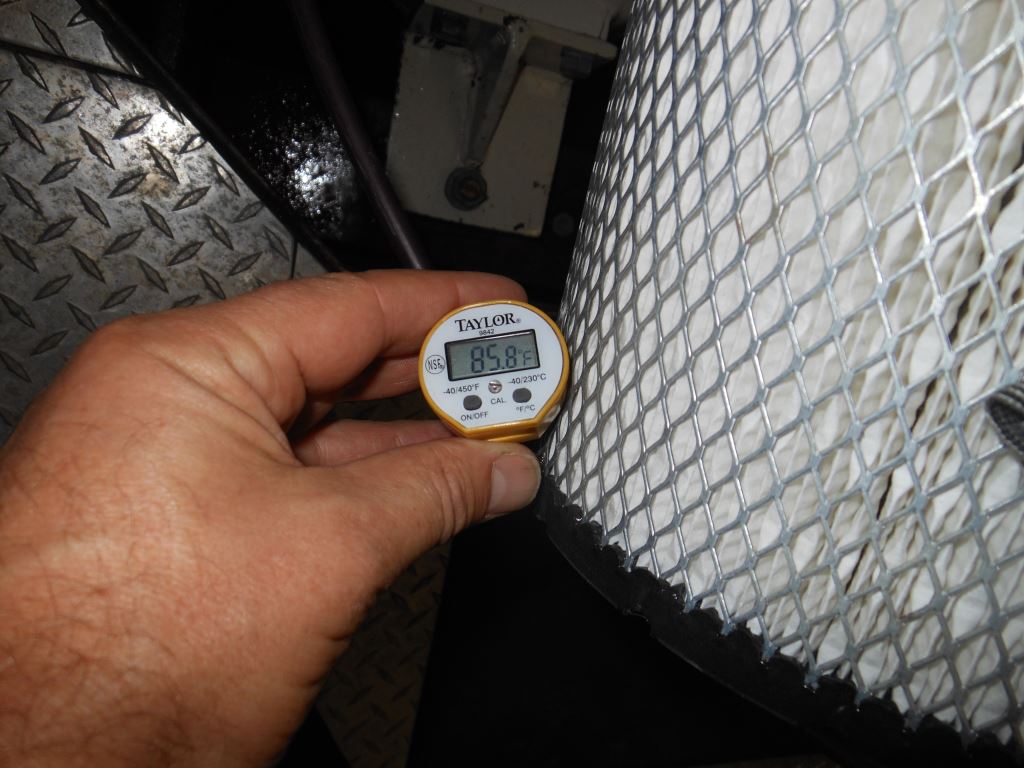
Excessive engine room temperature can be harmful to many components within the engine room, as well as diminishing engine efficiency.
While it’s hard to say just how much of an effect temperature has on this gear, one example is telling. The potting on many generators’ electronic voltage regulators hardens, and cracks, which ultimately leads to failure when exposed to extreme engine room heat. It’s the thermal canary in the coal mine, and is worthy of your attention; because the electrical end of a generator is air-cooled, hot engine rooms equate to gear, which isn’t good for its lifespan.
Engine air intake temperature should be measured using a wired (wireless is OK if not too bulky), digital probe type thermometer, (the one I use, made by Extech, is often used for fish tanks, it costs about $20), ideally with the probe suspended just above the surface of the filter element. While it’s tempting to use an IR thermometer, doing so will measure the temperature of the filter element itself, rather than the air passing through it; in testing I’ve done I’ve measured a disparity of as much as 7°F (4°C).
Diesel fuel is at its best when cool, at least comparatively so, it is denser, packs more BTU’s per gallon and has a higher viscosity, and therefore greater lubricity. Fuel also acts as a heat sink, carrying heat away from fuel injectors (and to the fuel tank, more on that in a moment). Keeping fuel cool is deemed so important by some engine manufacturers that they incorporate raw water fuel coolers into their fuel systems.
While you may have little control over fuel temperature, it’s a good idea to keep an eye on it, as a change could be an indication of a fuel routing, or fuel cooler problem, or another impending failure. It can be measured using an IR pyrometer, at the secondary filter (that’s the one on the engine). “Normal” fuel temperature varies with climate, seawater temperature of it is seawater cooled, engine room temperature, engine manufacturer, so it’s very difficult to give a generic range, however, keeping track of yours will allow you to identify a change.
As an aside, the heat the fuel removes from the injectors goes to the tank, and it’s close to the hull, and thus it is transferred, albeit inefficiently, to the water in which the vessel is operating. If the fuel tank is located in the engine room, some of that heat will be radiated into that space, thereby adding to the load imparted on the ventilation system.
Indirectly related to fuel temperature is fuel vacuum. Many diesel-powered vessels have vacuum gauges installed at the primary fuel filter (the one off the engine). If it’s one of the common Racor MAXX tandem series, with the selector valve, then the vacuum gauge is standard equipment. The primary reason for monitoring fuel vacuum is to determine the condition of the primary filter. As it captures more and more contaminants, the vacuum rise. Each engine manufacturer has their own threshold for allowable fuel vacuum; however, the general rule of thumb is it should not exceed 5” of mercury.
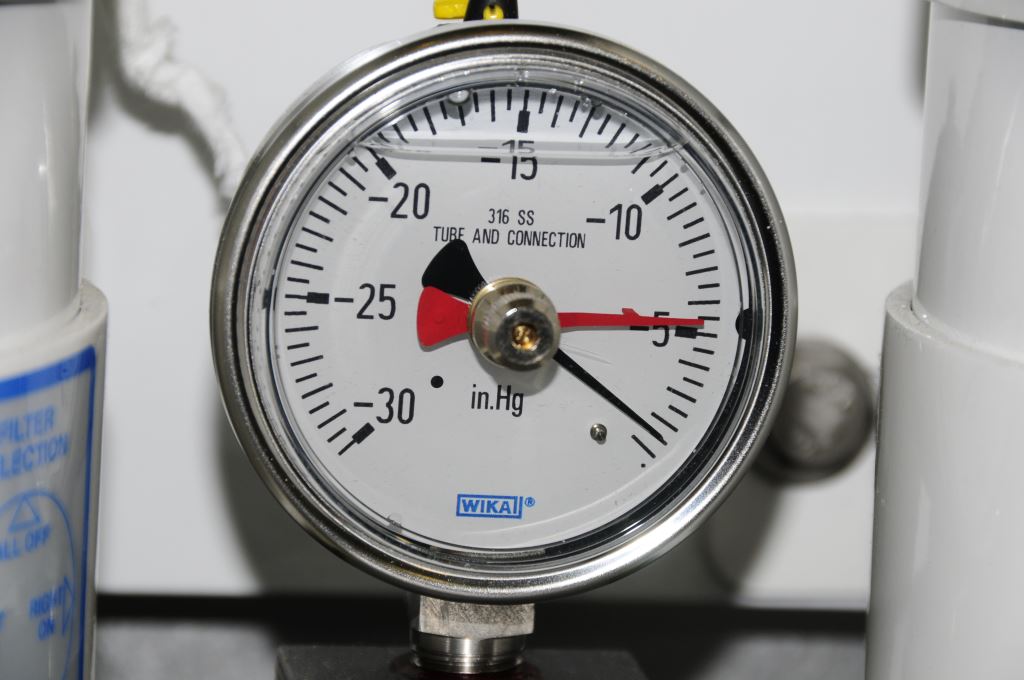
Primary fuel filter vacuum gauges are an invaluable tool in determining the condition of fuel filter elements.
Not all vacuum gauges are created equal, for more on that subject, and how to select the best one for your needs, see this article .
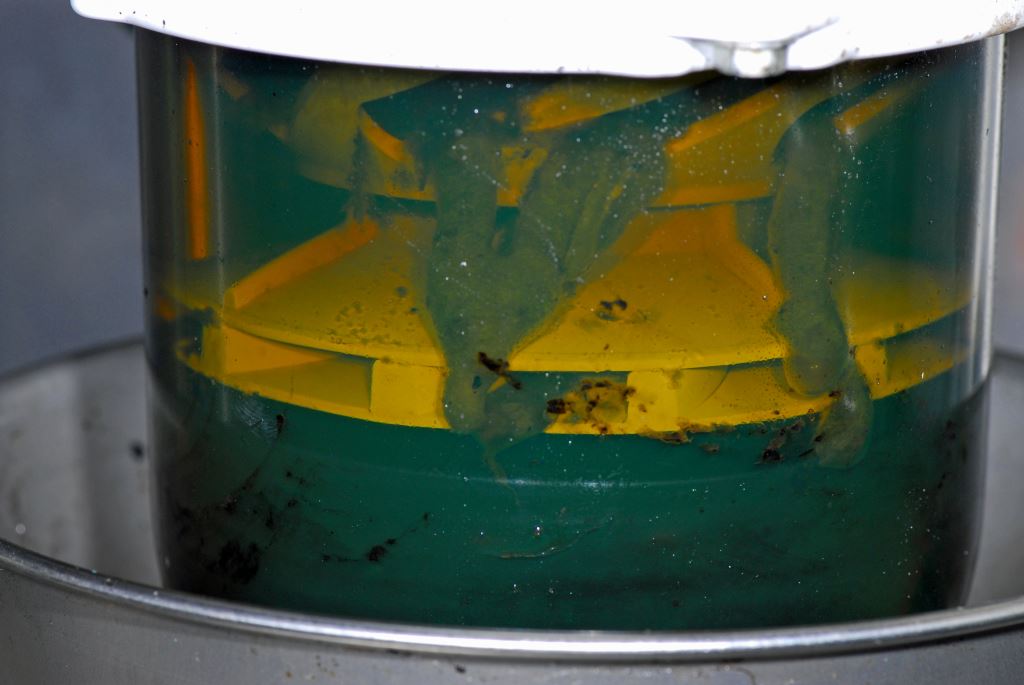
One of the beauties of clear primary fuel filters is being able to quickly determine of they are contaminated.
While you are at the primary fuel filter, and assuming it is a Racor turbine series, look closely through the bowl, and at the ports in the coalescer cone, you should see no bubbles streaming upward from any of these openings. Bubbles indicate a vacuum leak and air ingestion, which could affect engine operation, and in great enough volume could lead to an unanticipated shut down.
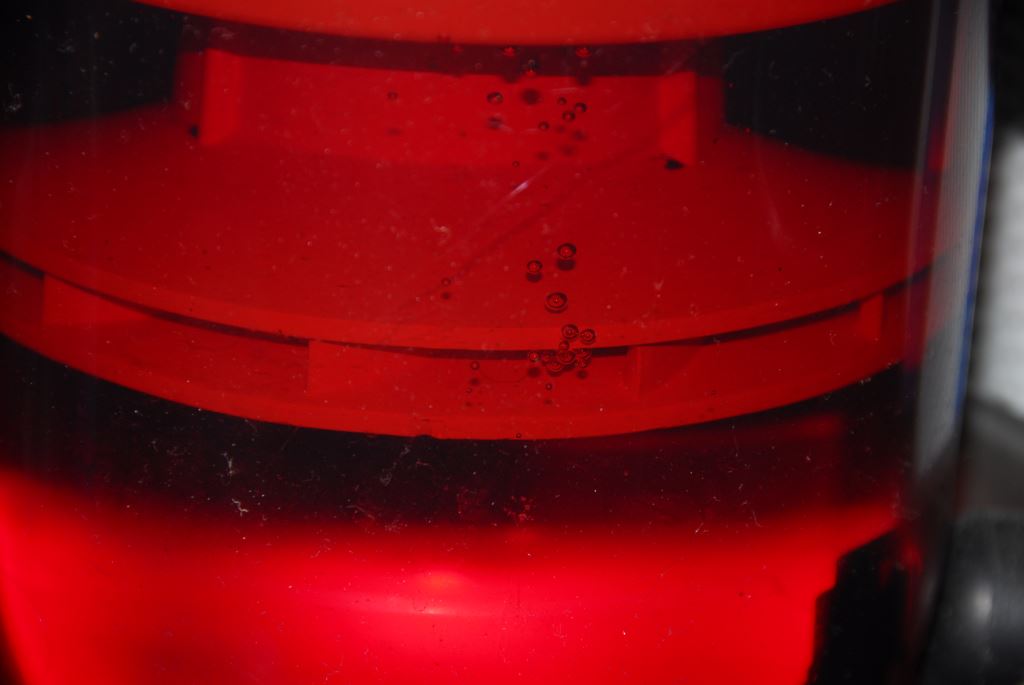
While water and asphaltene are the most common contaminants found in primary fuel filters, air bubbles are an indication of a vacuum leak in the system, one that can eventually shut down an engine. Check your filter carefully with a flashlight, any amount of air is too much.
Stuffing box temperature should be regularly checked, as an overheat can lead to leakage, in some cases catastrophic if a non-metallic dripless stuffing box melts and seizes to the rotating shaft. While the rules for allowable temperature vary for different dripless stuffing box manufacturers, I have found that both conventional and dripless boxes, when properly plumbed, typically do not run over about 40°F (22°C) above seawater temperature. Because an IR pyrometer can be confused by the reflective nature of a propeller shaft, or rotor of a face seal stuffing box, be careful to keep your measurements confined to the packing or stationary seal area.
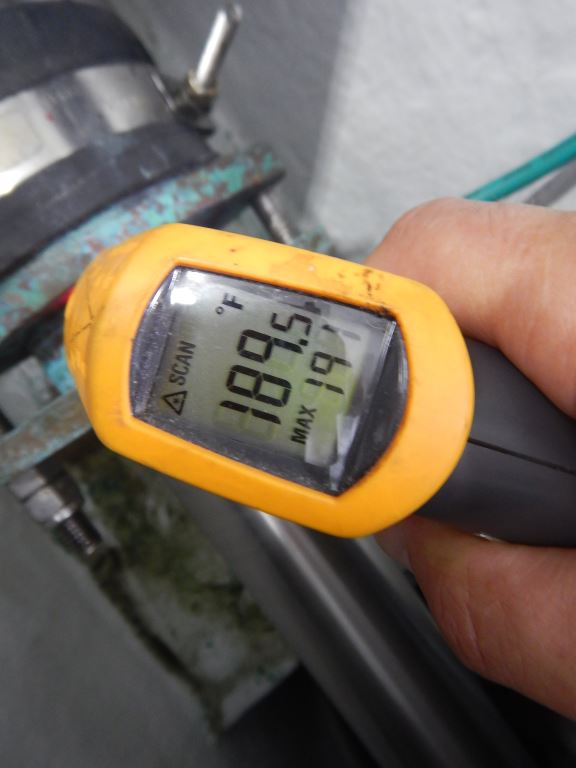
Stuffing boxes, dripless and conventional, are prone to overheating, this one is running much too hot.
If your vessel is equipped with a hydraulic system for stabilizers (and often thrusters as well), the pressure and temperature of this fluid should be monitored. It’s important to remember that if you have a hydraulic stabilizer system, the pumping action generates heat, which must be removed from the system via a heat exchanger, which is usually located near, or even within, the fluid reservoir. If that heat exchanger utilizes a dedicated seawater pump, and it fails, or the strainer becomes clogged, the hydraulic fluid will eventually overheat. If that happens, the hydraulic pump may be damaged or worse, it may seize. If the pump is “live” meaning it cannot be disconnected from its driven source, the engine timing or transmission gear, via a clutch, the seizure will almost certainly result in severe damage to the engine or transmission. The same scenario would occur if you were to lose hydraulic fluid, because of a leak or burst hose, albeit far more rapidly. If your hydraulic system begins to overheat, you should get an audible alarm before it becomes critical. Regardless, if you cannot disable the hydraulic pump(s) via a clutch, you will need to resolve the cooling problem, or stop the engine. Unbolting the hydraulic pump from its power take off (PTO) drive is yet another option. For more on this subject see this article .
You can measure the hydraulic fluid temperature by scanning the tank with your IR pyrometer and recording the highest reading, which will likely be closer to the top of the reservoir. It varies by application; however, I rarely encounter temperatures greater than about 135°F (57°C).
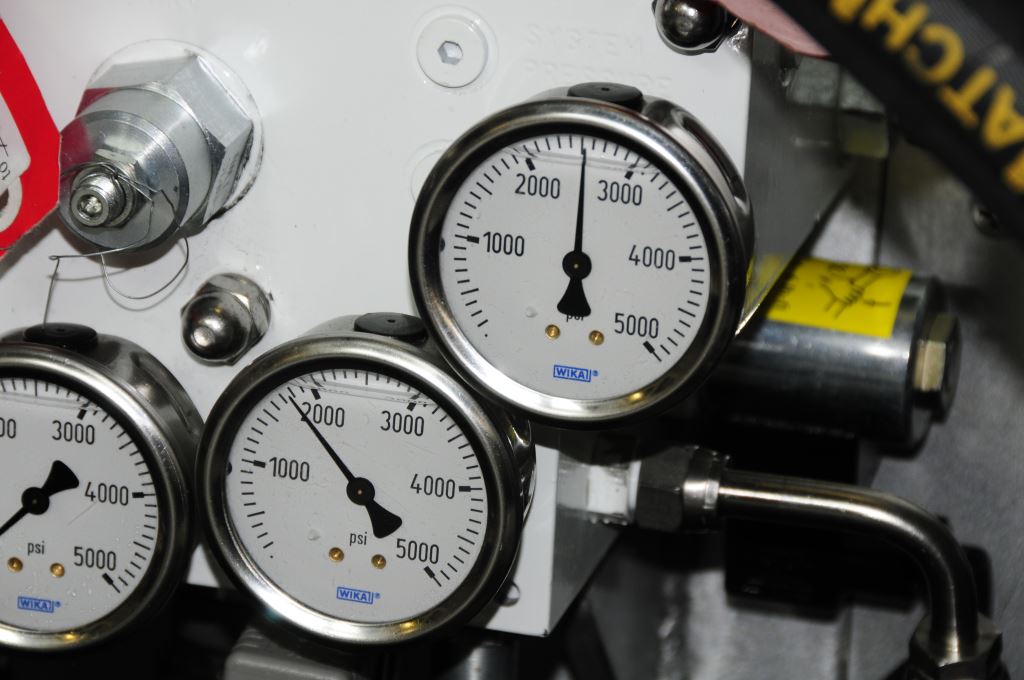
Pressure gauges offer a quick indication of the health of a vessel’s hydraulic system; check yours and make certain you know the manufacturer-specified normal range.
Hydraulic pressure is usually available on a hydraulic system manufacturer-supplied gauge, located at a manifold or the reservoir, which may be either permanently mounted, or it may require inserting a ‘test gauge tool’ into a quick connect port; clearly the latter is less convenient for routine engine room sweeps.
Running Gear: Beginning with the transmission, conduct a visual inspection, looking for leaks, signs of unusual vibration or loose hardware (hint; loose mild steel components such as fasteners and brackets, will generate a very fine brown halo around vibrating part; if you see that be sure to check carefully for something in the vicinity that’s loose). Take a temperature reading on the oil filter if present, and if not on the casing (wave your IR pyrometer around the case in the scan mode looking for the highest temp). If your engine has a wet exhaust system, then the transmission will usually be raw water cooled, which means it will run somewhere around 150°F (66°C). If, on the other hand, you have a dry exhaust, then the transmission will be jacket water cooled; it will therefore run closer to the coolant temperature.
If your vessel is equipped with a thrust bearing, an Aquadrive, Seatorque, or similar system, measure its temperature using your IR pyrometer. The primary goal here is to measure the thrust bearing housing; if it’s out of alignment its temperature will be elevated, as well as universal or CV joints, whichever of the two it may have. Temperatures for these components vary with the manufacturer and load so consult the manual for your equipment’s range, however, generally speaking Aquadrive thrust bearing housings rarely run over 170°F (77°C), while the CV joints themselves shouldn’t exceed 150°F-170°F (66°C – 77°C). Seatorque’s guideline notes a maximum temperature of 220°F (104°C), but they typically also run much cooler, somewhere around 185°F (85°C) in my experience. The U-joints will, over a longer run, operate at somewhere between 150°F-170°F (66°C-77°C). For more on thrust bearing systems see this article .
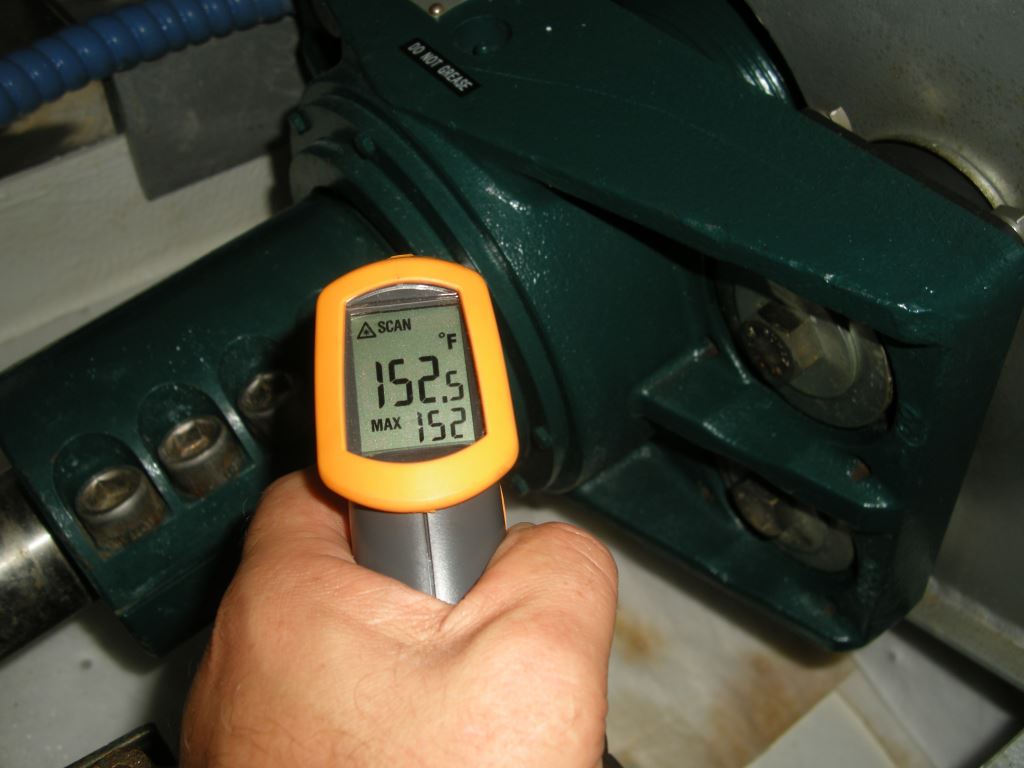
Thrust bearings like the one shown here do an excellent job at reducing onboard vibration, however, if improperly aligned they can overheat.
Motor mounts should be inspected for obvious signs of movement or loose hardware. This can and should be done during every static engine room inspection, however, you can’t look them over too often. If you can access them safely while underway (outboard mounts on twin engine applications may be tough to get to), then do so. Look as well for accumulations of rubber dust, an indication that the rubber of deteriorating, or metal to metal contact bet floating and stationary metallic parts or fasteners, which is often the result of collapsed flexible inserts. For more on motor mounts see this article .
Watch the shaft to ensure it is turning true and not wobbling from side to side; this is most easily observed by watching the stuffing box. A wobble can be caused by several defects, among these a damaged or fouled propeller, a bent shaft, a shaft that is not centered in its coupling, or a coupling that is not centered in the transmission’s output flange pilot bore (the latter two are coupling defects that necessitate coupling replacement or machining).
Finally, check the vessel’s steering system. If it’s hydraulic and powered, via a PTO, then check the fluid level, temperature and pressure (the reservoir usually has a pressure gauge). Hydraulic steering systems that operate via an engine-driven pump typically utilize seawater cooling, the water for which is usually drawn directly from the engine’s own raw water circuit. In other cases, it may rely on a dedicated pump. Either way, monitoring the temperature is important, as an increase can be an early warning of a fouled heat exchanger’ clogged intake or damaged impeller.
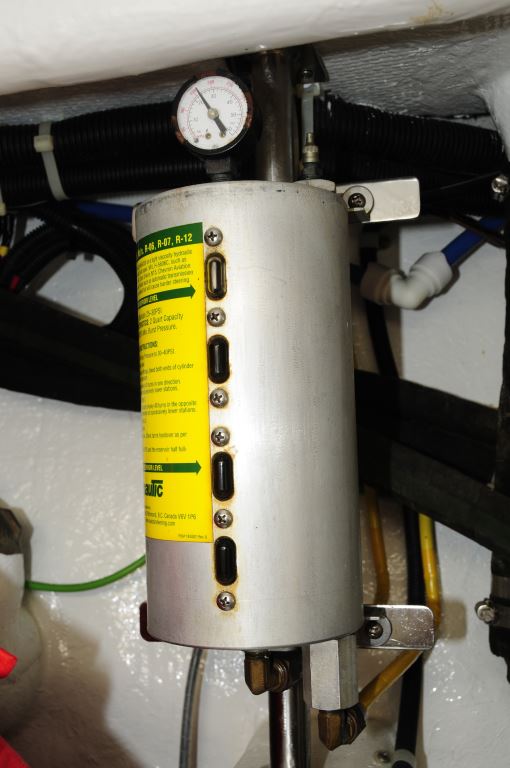
Hydraulic steering system utilize a reservoir, which is in many cases pressurized. Check both the level and pressure (this may not be in the engine room).
The temperature can be measured at the filter or reservoir. If the system is purely manual, then conduct a visual inspection of the fluid level, the rams, plumbing, valves, tie rods, and fasteners that secure the ram end(s) to the tiller arm. Loose or worn fasteners, or clevis pins (these connect two moving parts, tiller and ram end) are among my most common finds when inspecting steering systems. Check the fasteners that secure the ram to the base or shelf on which it rests. This is best done when making turns, so plan on checking this while doing some S turns at cruising speed about every 100 hours of engine time. For more on steering systems see this article .
I’m occasionally asked, “do I need to check the engine room if I have a camera in that space?” The answer is yes, you do, there’s one thing a camera still can’t do, and that’s smell. If you have a coolant or fuel leak, you are very likely to smell it as soon as you enter the space.
Without a doubt, engine room checks pay dividends, as they enable you to catch problems before they become critical, which can endanger both the vessel, and your wallet.

You cannot copy content of this page
Sam's Marine
- Owners Forum
- Online Parts Catalogue
- Model Brochures
- Member List
- Mark Forums Read
- View Forum Leaders
- Who's Online
Welcome to the Hatteras Owners Forum & Gallery. Sign Up or Login
- Remember Me?

- Hatteras Discussion
- Hatteras Tech Talk
Engine Room Camera?
- If this is your first visit, be sure to check out the FAQ by clicking the link above. You may have to register before you can post: click the register link above to proceed. To start viewing messages, select the forum that you want to visit from the selection below.

- Jump to page:
Thread: Engine Room Camera?
Thread tools.
- Show Printable Version
- Email this Page…
- Subscribe to this Thread…
I have been researching some off-the-shelf, or more appropriately, off-the-Amazon options for installing a couple of cameras to monitor the engine room and other areas while underway. I would rather not have to run another set of wires all the way to the flybridge, so I was exploring wireless options. This would be for real-time monitoring so I don't really need DVR or Cloud storage for recording. Ideally I would like to be able to connect using my android tablet or phone versus having to have a dedicated monitor on the bridge for the camera(s). It seems that there are a number of camera systems that allow you to connect through a wireless router, but all the ones that I've looked at require that the router be connected to the internet to be able to view the video feed using a tablet or phone, even locally. This of course wouldn't be a problem if I was able to get internet service beyond 15 miles off-shore (come on StarLink! ). Any ideas or experience along these lines? Thanks Alan
" The only thing that always works on an old boat is the owner " - Some Wise Guy 1976 46' Convertible Old Fort Bayou Ocean Springs, Mississippi
Re: Engine Room Camera?
I have a pair of Wyze wireless cams on my boat and for the price they work perfectly. My set has a wireless base which doesnt need internet to view onboard but will for remote viewing. There might be a second or two delay nbd also has motion and night vision and with a card you can record and view later. Mine were set up to record while away and the batteries lasted all summer without a charge.
ENUFF. 1983 53MY.Hull #617 Barnegat Light Nj.
Thanks for the reply MadHatter. I'll look into those . I actually have a camera (pan, tilt, zoom, on-board wifi, etc) that I bought a little while back that I was hoping to mount in the engine room until I found that it had to have an internet connection. I'm wondering if it would be possible to figure out what "language" the camera was speaking and find a way to translate the wireless signal using a generic audio/visual app so that it could be viewed off-line versus going through the manufacturer's app that requires an internet connection. Probably making this harder than it needs to be.
Im surprised you cant just connect to the camera with your phone tablet etc. thats how my cameras work.
Not sure of the brand but 3 or 5 years ago a friend of mine bought some kind of security cameras from Sams club. They were wireless. Had a small screen he put in the bridge and the cameras mounted in the ER. They did OK but the screen was too small for my liking
Originally Posted by MadHatter53 I’m surprised you can’t just connect to the camera with your phone tablet etc. that’s how my cameras work. You would think that would be the case (at least I did), but you have to have their app to "talk" to the camera and that only seems to works if it can link with the internet. I can see the camera as an active network connection on my phone and I can connect to it, but the camera won't function through the app unless I have an internet connection. Maybe I'm over looking something obvious here. This new fangled technology is apparently above the level of comprehension for my old analog brain. Originally Posted by Briankinley2004 Not sure of the brand but 3 or 5 years ago a friend of mine bought some kind of security cameras from Sams club. They were wireless. Had a small screen he put in the bridge and the cameras mounted in the ER. They did OK but the screen was too small for my liking That's my problem also. Plus the screens are not very robust, especially where they might get exposed to the elements.
--> Last edited by Play'N Hooky Too; 02-03-2022 at 08:18 PM .
All the electronics makers have wireless cams and you use the map screen at the helm. But they're ridiculously expensive. So, I certainly understand what you're trying to do. The wireless security cams in my house are $50 each and you can view them on your phone or tablet. Just bought the system on Ebay. Money buys convenience I guess. Garmin is $300. https://www.crutchfield.com/S-c2REmP...xoCEREQAvD_BwE I have a Simrad system which has been difficult to learn. This camera with infrared is really expensive for 500 bucks. They must think I'm stupid. https://www.atlanticrt.com/simrad-camera-w-ir.html There is a coax running from my helm to the ER from a cam I threw away - looked 25 years old. I might think of something to run with that coax when my to-do list shrinks.
At the mouth of the Caloosahatchee 1984 52C
Research wireless backup camera's. I added a camera to the radar arch and put the screen on the pilot house dash so that I can see whats coming up from behind. I only question if it will get a good signal from the engine room to the bridge. Salty lady 53 MY #555 Chester Ct Ft Pierce Fla
Originally Posted by Salty lady Research wireless backup camera's . I added a camera to the radar arch and put the screen on the pilot house dash so that I can see what’s coming up from behind. I only question if it will get a good signal from the engine room to the bridge. Salty lady 53 MY #555 Chester Ct Ft Pierce Fla Genius! I want to see what the kids are up to downstairs as well. https://waggonerguide.com/backup-camera-for-boaters/ This wireless deal is perfect, but really expensive. Could make your own much cheaper, I'd think. https://www.tadibrothers.com/product...ted-box-camera https://www.tadibrothers.com/product...backup-cameras 636295867061819374.jpg
--> Last edited by JuiceClark; 02-03-2022 at 10:36 PM .
I made a system myself, wired. It worked ok but be sure your cameras work in low light conditions.. likely you'll need more light than you might think. I had to leave my engine room lights on. Also, sunlight may make viewing your displays difficult....especially on any flybridge. I decided that I'd need a really top of the line system to see details with engines running and sucking in all the engine room air, I fear even smoke would be dissipated too fast to be very visible. Probably best to find an installation and talk with an experienced owner to find one that meets your requirements. I found I'd need five cameras for good coverage of my 8V71TI's and generator...one fwd, one aft each engine, plus one for the genny. Other options: Murphy gauges {to monitor engine coolant levels]; transmission temperature gauges to monitor those temps; sea water flow meters to alarm the instant sea water flow ceases. All these signal BEFORE any real problem arises. Good luck.
Rob Brueckner former 1972 48ft YF, 'Lazy Days' Boating isn't a matter of life and death: it's more important than that.
- Private Messages
- Subscriptions
- Search Forums
- Forums Home
- Frequently Asked Service Questions
- Everything Else
- Parts Wanted & For Sale
- Boats Wanted & For Sale
- CABO Yachts
Posting Permissions
- You may not post new threads
- You may not post replies
- You may not post attachments
- You may not edit your posts
- BB code is On
- Smilies are On
- [IMG] code is On
- HTML code is Off
Forum Rules
- News & Events
- Vintage Tees
- Hull ID Information
- Links, Articles & Videos
- Discount Propellers
- Tips & Tricks
- Part Specials
Download Model Brochures
We are continuously updating these archives. If you do not see the brochure you are looking for, stop back soon.
Hatteras Wear
Classic hoodie.
A classic new look
New Englander Jacket
1-800-678-9230
© 2011 Sam's Marine. All Rights Reserved. Website built by: Relivo Media Powered by vBulletin® 4
- Boat Plans Catalog – 300 Boats You Can Build!
- Electrical Design Plans
- Boatbuilding Supplies & Epoxy
- Inboard Hardware
- Books & DVDs
- Raptor® Fastenings & Tools
- Boat Trailer Plans
- Glen-L RV Plans
- Boatbuilder Blogs
- Project Registry Archives
- Web Letter Archives
- Boatbuilder Galleries
- Customer Photo Archives
- About Our Plans & Patterns
- Boatbuilder Forum
- Boatbuilder Gatherings
- Boatbuilding Methods
- Our Boats in Action
Barrelback Design
Home » Gallery » Barrelback Design

April 24, 2020 - Thank you so much for this experience.. your plans were a dream to work with and this barrelback 20 has amazing lines! I will be looking at starting another Glen-L as soon as upholstery and the rest of the trim goes on.
3 Photos
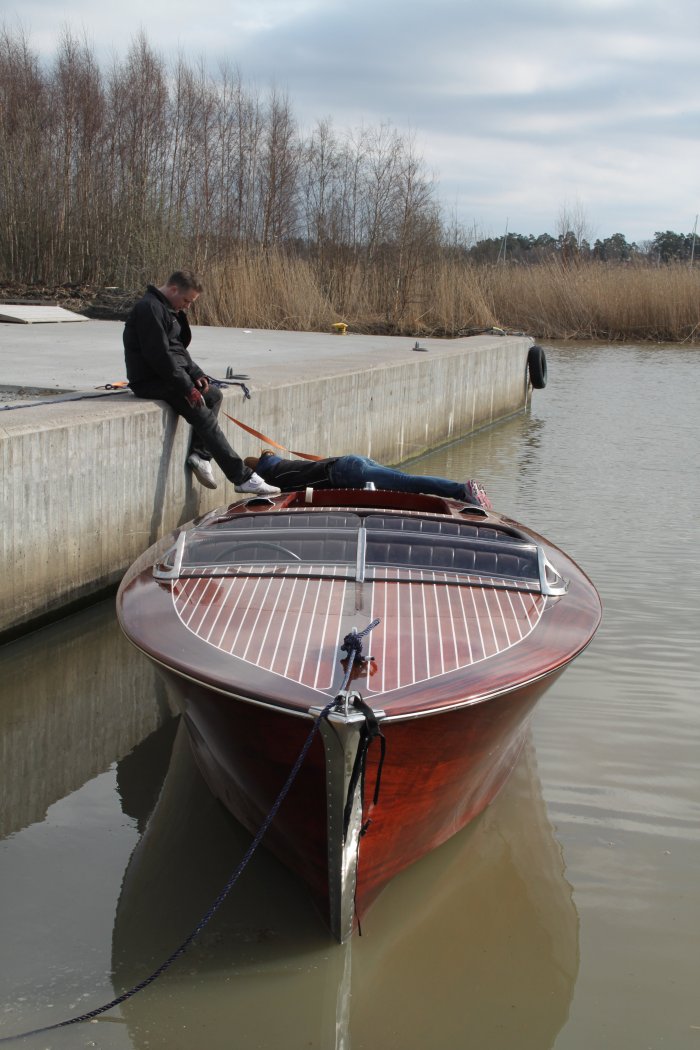
Updated 20 May 2013 April 2013
21 Photos
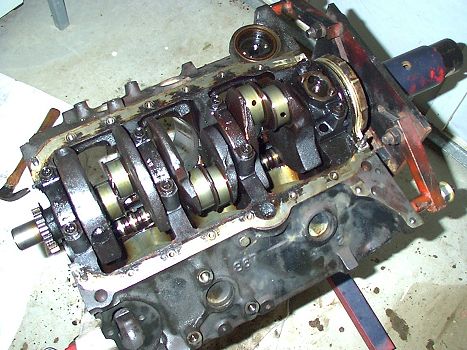
18 Photos

\"Bootlegger\" Hankinson 19\'6\" Barrelback by Greg Roy Some \"Kiwi\" inventions include:
12 Photos
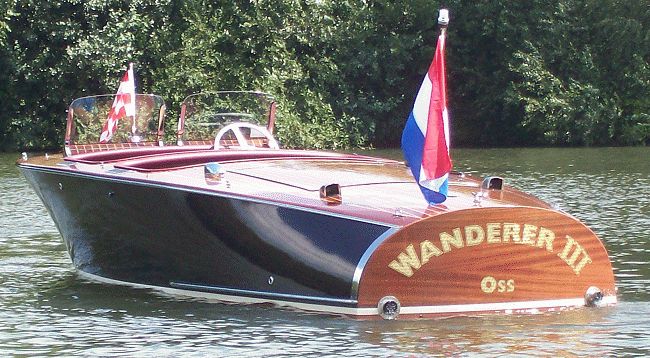
28 August 2009
6 Photos
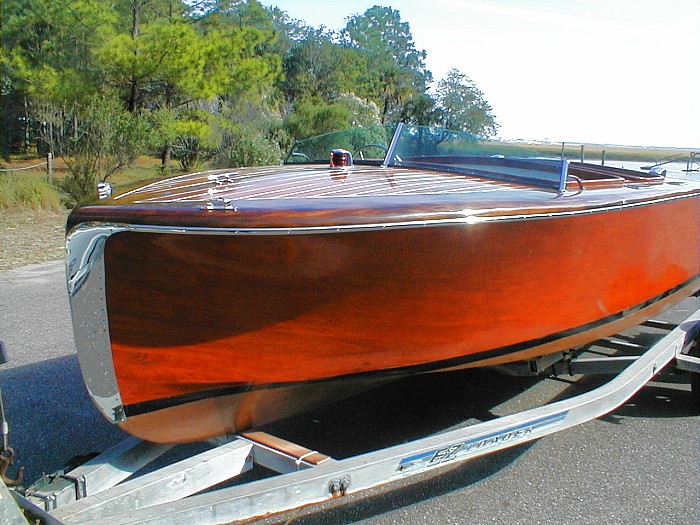
12 January 2010 My Barrelback built in 2008.
4 Photos
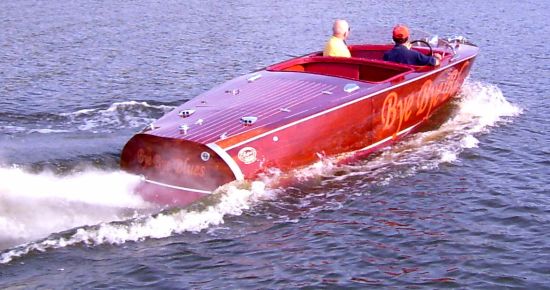
5 Photos
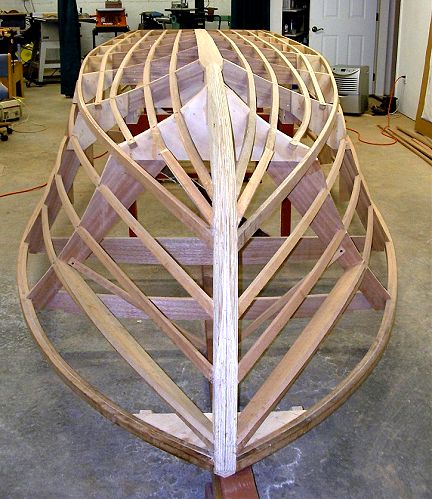
14 December 2007 The attached pictures are from the start of the project to the present. I will send more pictures as I progress. I am now 2 months into the project and spent about 3 to 4 hours a day, to date 191 hours. I am retired and made a deal with my wife to do household chores in the morning and the boat project in the afternoon. It is working! Ron Hoag
13 Photos
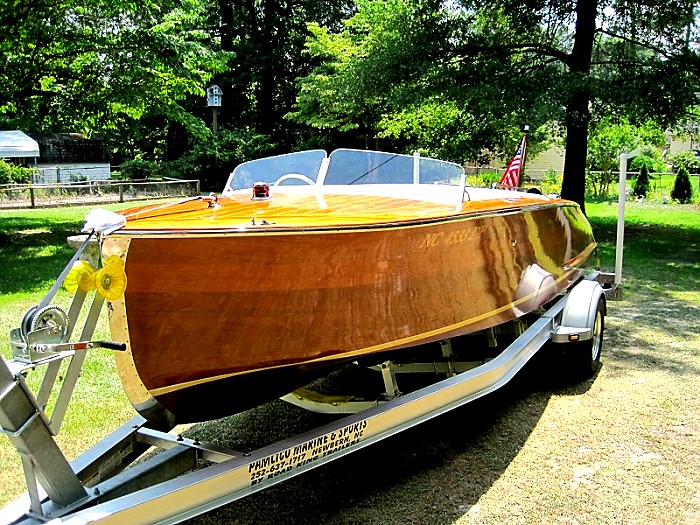
Images documenting the Barrelback-19 build being undertaken by myself and my Father in Melbourne Australia. The project was begun at the end of 2011 and we\'re aiming on a twelve month time schedule, finishing at the end of 2012.
26 Photos
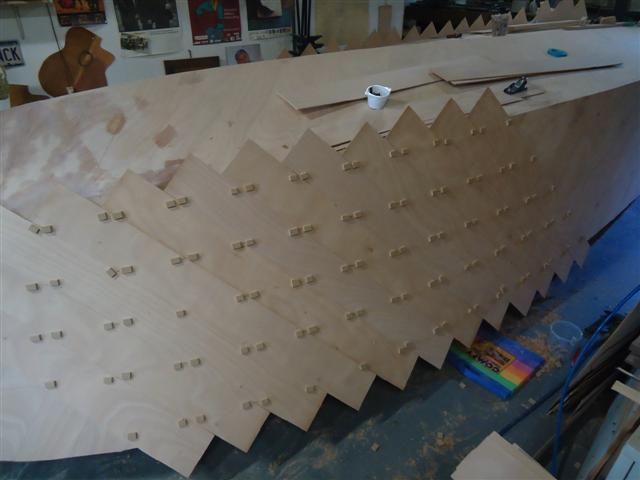
Pictures of the Barrelback I am building. 2nd Update November 2013 Update November 2013 June 2013
69 Photos
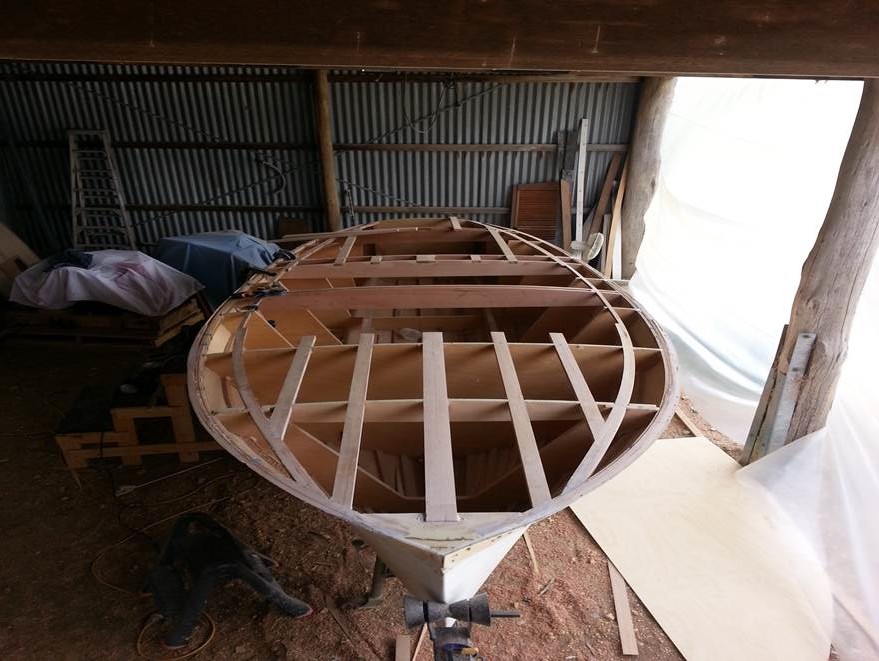
November 2013 Thank you for the great plans. I have attached a picture of my boat so far and would like to re-iterate how much fun I have had building it so far.
1 Photos
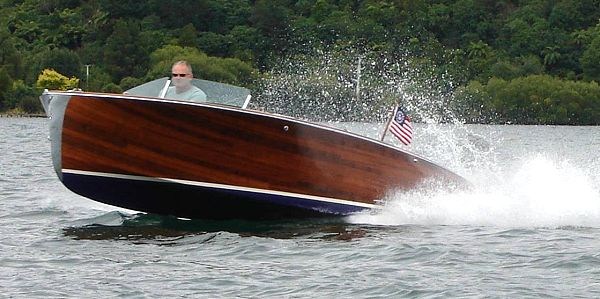
Photos sent in September, 2018

January 2014

October 2017
44 Photos

February 2015 Barrelback finished in 22 months. Designed a hardtop that hinges in the back for entry. Powered by an original 95 HP Hercules k block. Will send more pictures and comments in the near future . --- Doc Salvatore.
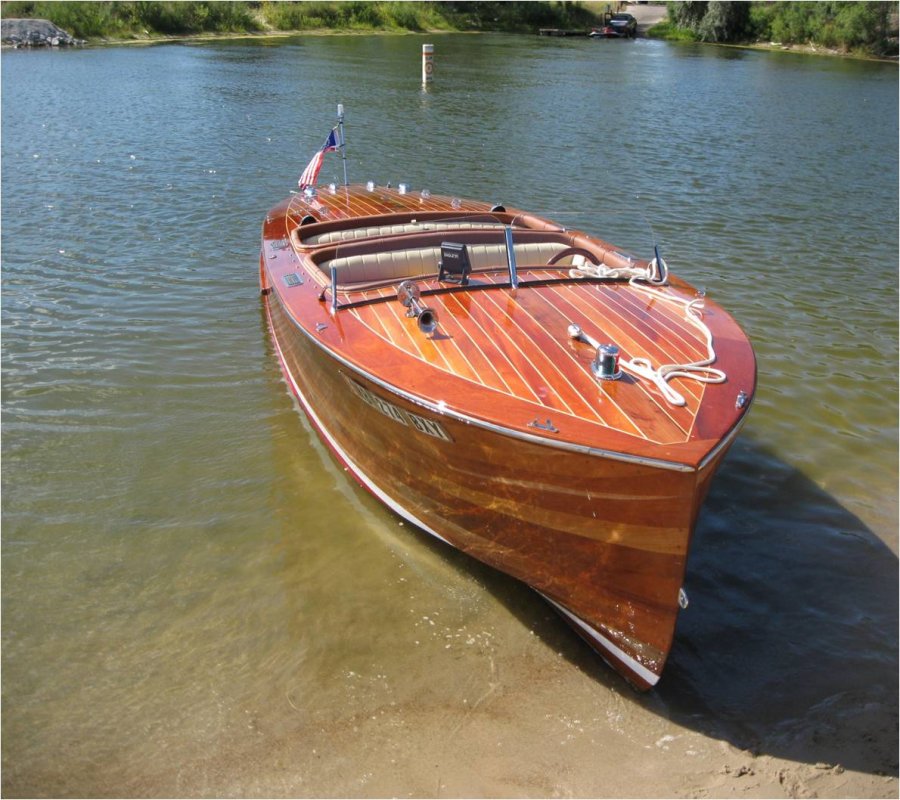
August 2015 My Parents took me for a ride on a wooden boat in Michigan in 1958. That planted the seed for this 2008 project. As you can see once the seed is planted I jump right in. :-) A little over five years from start to finish. The following is a brief photo journal of the birth of \"Hot Mahogany.\"
35 Photos
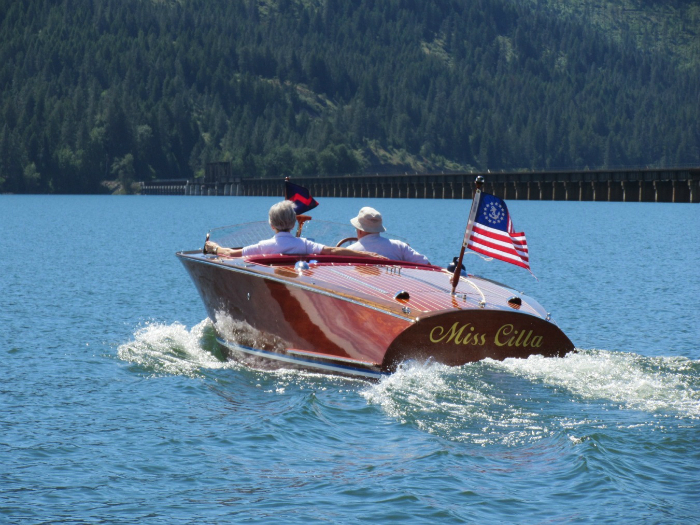
Click here for Gary\'s PDF booklet of building his Barrelback added August 2015 New Photos Added February 2013 June 2012 This Barrelback 19 is built from plans by Ken Hankinson, who got his start with Glen-L and since his retirement Glen-L is the only source for Ken\'s plans. I started the project in 2002. Due to work responsibilities and having to build it in an outside shelter which did not allow work to proceed in the winter in Olympia, Washington it has taken me 10 years to complete it. In 2009 I retired and moved the boat to our new home in Sagle, Idaho. Since then I\'ve been able to put more time into completing it. As soon as the water level in Lake Pend Oreille is raised to its normal summer level I will be launching. Ken Hankinson\'s plans were great and easy to follow. I\'m very happy with the way it turned out. I have two things to complete before launching; I will be painting the name \"Miss Cilla\" on the transom and adding a few more coats of varnish on the sides of the hull.
22 Photos

Updated July 24, 2016 July 2012 Showing each step in the building process. I'm trying to take enough pictures to show anyone that is thinking about building the Barrelback how I went about doing so.
113 Photos
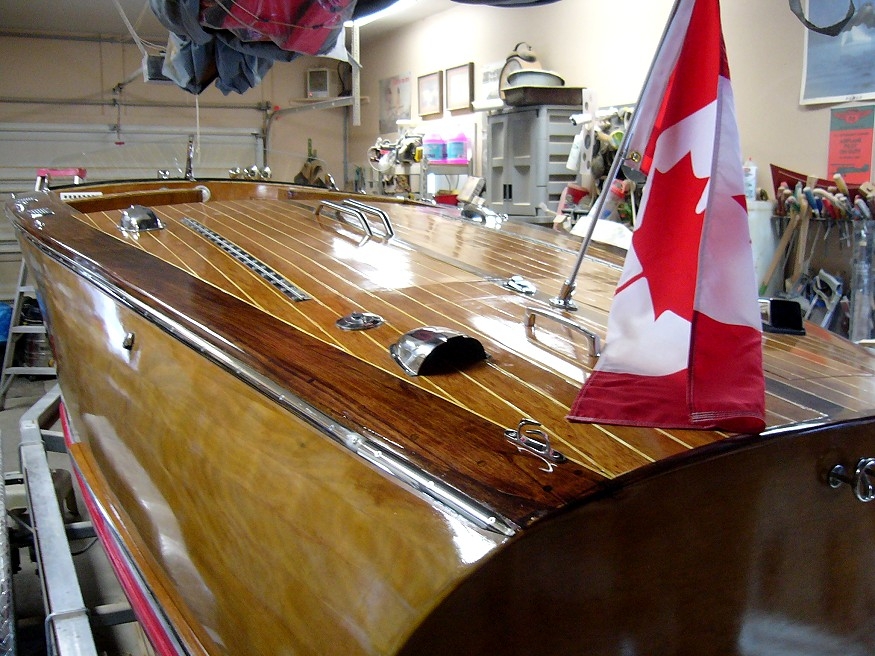
November 2017
June 25, 2018
78 Photos
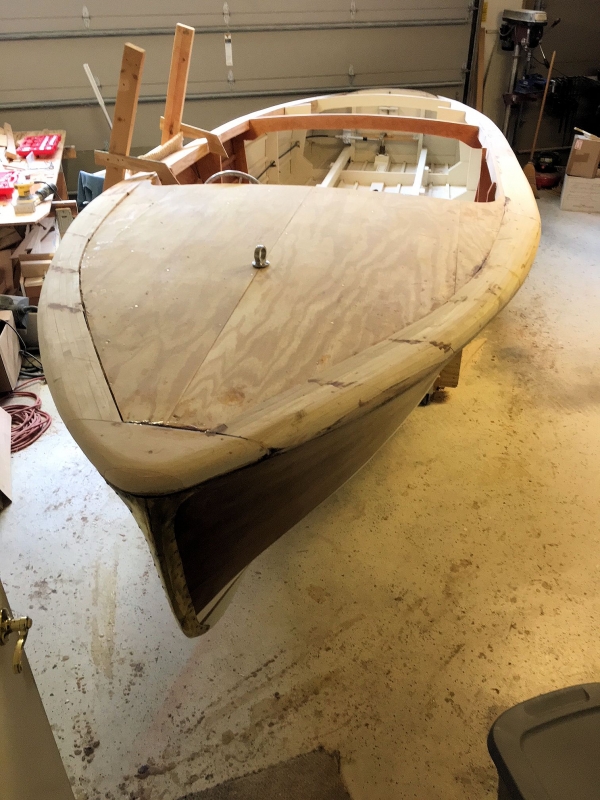
August, 2018
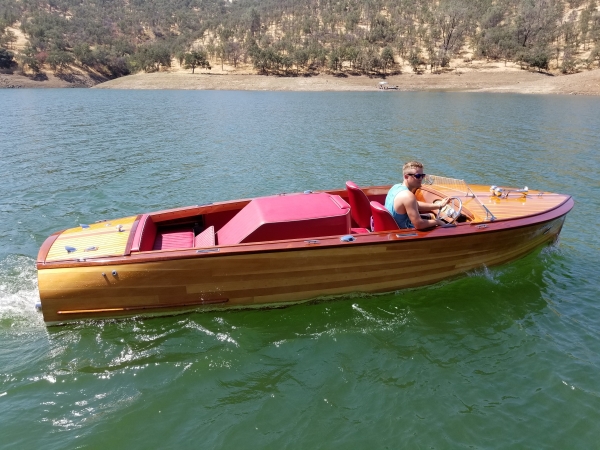
January 2019 - Well, after 4 years, here are a few pictures of my build. Thanks for the great experience.
2 Photos

October 30, 2019
266 Photos
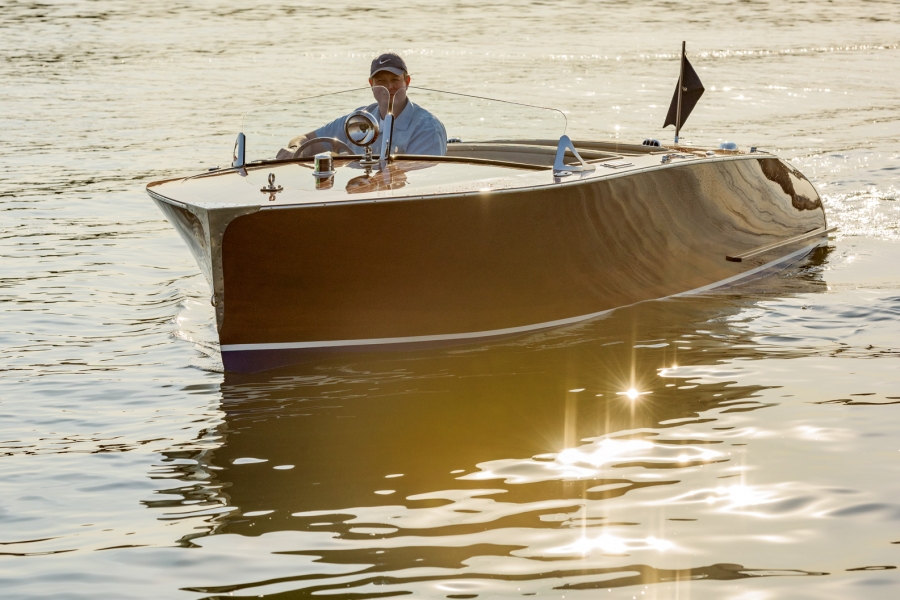
February, 2016I built this boat due to a life long desire to own a wooden classic.
7 Photos
One Response to Barrelback Design
[…] For more photos of James’ Barrelback and other builder photos, see the Barrelback Gallery Album. […]
Boatbuilder's Blog
- 2- Dashboard
- 3- How To Register To Add Pictures & Posts
- 4- How To Add Your Own Pictures
- 5- How To Add Your Own Story
- 6 – Have a Boatbuilding Question? Visit our Boatbuilder Forum Here
Boatbuilding Stories
Useful information.
- Cost To Build
- Links & Suppliers
- Online Glossary
- Support Knowledge Base
- Wood & Plywood
Building Links
- How Fast Does It Go?
- Install A Jet Ski Motor
- Modifying The Motorwell
- Sailboat Hardware Notes
Glen L Marine Design
- About Glen-L
- How To Place an Order
- Privacy Policy Statement
Copyright Info.
Copyright 2006-2022 by Glen L Marine Designs. All rights reserved.
Mailing Address: PO Box 8958 Moscow, ID 83843
- 2024 BOAT BUYERS GUIDE
- Email Newsletters
- Boat of the Year
- 2024 Freshwater Boat and Gear Buyers Guide
- 2024 Boat Buyers Guide
- 2024 Water Sports Boat Buyers Guide
- 2024 Pontoon Boat Buyers Guide
- Cruising Boats
- Pontoon Boats
- Fishing Boats
- Personal Watercraft
- Water Sports
- Boat Walkthroughs
- What To Look For
- Watersports Favorites Spring 2022
- Boating Lab
- Boating Safety

Pleasurecraft Marine’s New ZZ8R and ZZ8S Engines
- By Rick Shackleton
- May 27, 2024
It’s long been a given that a high-performing marine engine requires a higher-octane fuel in order to deliver its rated performance. The engines needed to power the largest of today’s watersports boats are a case in point.
Now, that’s changed. With the introduction of its ZZ8R and ZZ8S, Pleasurecraft Marine ( PCM ) offers two supercharged marine engines that can produce maximum power and torque without needing 93 or higher octane gasoline. In fact, the ZZ8S is the first supercharged inboard tow-sports engine over 600 hp to run on Rec 90.
This milestone is important for several reasons. For one, it allows boaters who require high-performing supercharged engines to choose the Rec 90 gasoline blend. Rec 90 is pricey, but it contains no ethanol, and so alleviates the problems associated with fuels such as E10. Also, the 93-octane fuel that most high-performance engines require for max output is not available at waterfront fuel docks in many markets. Boaters in those regions thus gain the convenience of using a readily available fuel grade if their boat is powered by these new PCM powerplants.
For the 2024 ZZ8S and ZZ8R models, PCM developed a new ground-up marinization system featuring a custom supercharger cooling circuit to provide the engine with lower intake air temperature and higher performance. Utilizing this marinization system along with custom calibration for engine optimization and protection, the mandate for using premium fuel in supercharged boat engines exists no longer, according to PCM.
Typically, higher-octane fuels have been required to prevent “knocking,” a phenomenon in which the fuel-air mixture ignites at the wrong time, sending destructive shock waves through the engine. “The engines have been calibrated to, and certified with, Rec 90-octane gasoline,” says Kevin Finney, PCM engineering manager. “Using fuel with a lower-octane rating isn’t recommended,” Finney advises, adding that, “additional performance may be gained with 93 octane.”
The ZZ8R is rated at 570 hp and 600 pound-feet of torque and features a new Super Duty transmission coupled with the PCM Power Plus V-drive in a 1.5-to-1 ratio, offering supercharged performance for midsize inboard watersports applications. For reference, this engine powers Nautique’s S and GS models (20 to 25 feet, respectively), according to PCM.
Read Next: Marine Alternative Fuels Test
The ZZ8S “crushes the performance mold,” according to PCM. At 630 hp and 665 pound-feet of torque, it features the new Super Duty transmission and a new Super Duty V-drive in a ratio of 1.7-to-1 to power the industry’s largest wave- and wake-making machines. The ZZ8S can be found powering Nautique’s G Series Paragon and Centurion’s Fi245 and Fi265 models, according to a PCM spokesman.
Both the ZZ8R and ZZ8S are available as complete OEM powertrain packages. Neither is available for repower projects. That means performance and convenience might just be your incentive to shop for a new boat.
- More: Boats , Engines , June/July 2024 , pcm , v-drives , Water Sports Boats
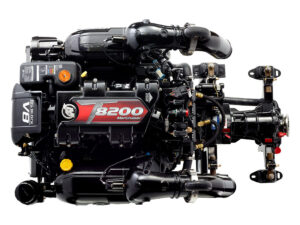
Mercury Marine Intros MerCruiser T8200 Tow Sport Inboard
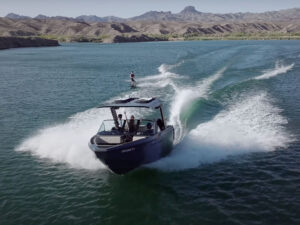
Arc Boats Optimizes Electric Power
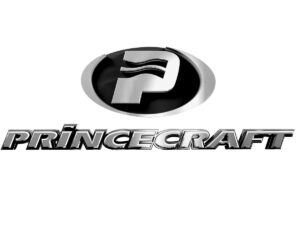
Marcel Dubois of Princecraft Dies
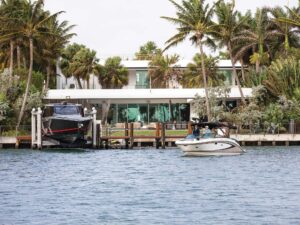
Conveniently Rent a Boat Using Boatsetter

After a Devastating Loss, One Family’s Resilience Leads to a Lifesaving Rescue
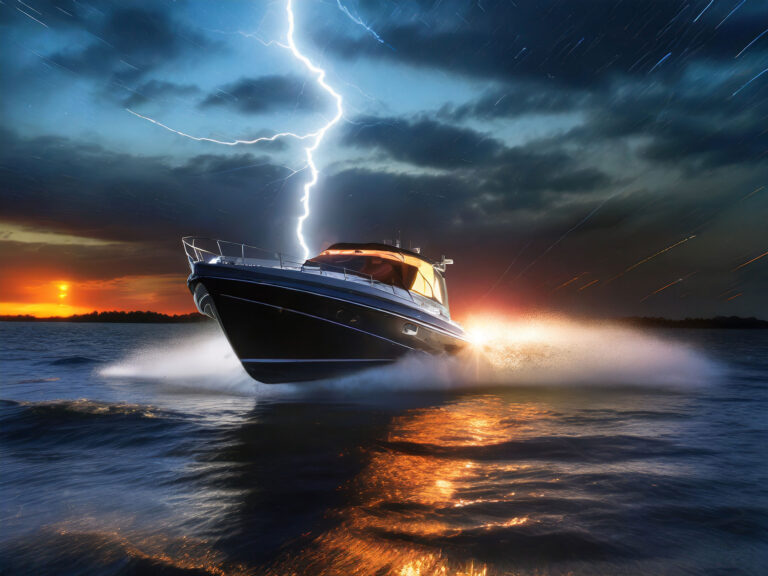
How to Avoid Lightning Strikes While Boating

On Board With: Alexa Score
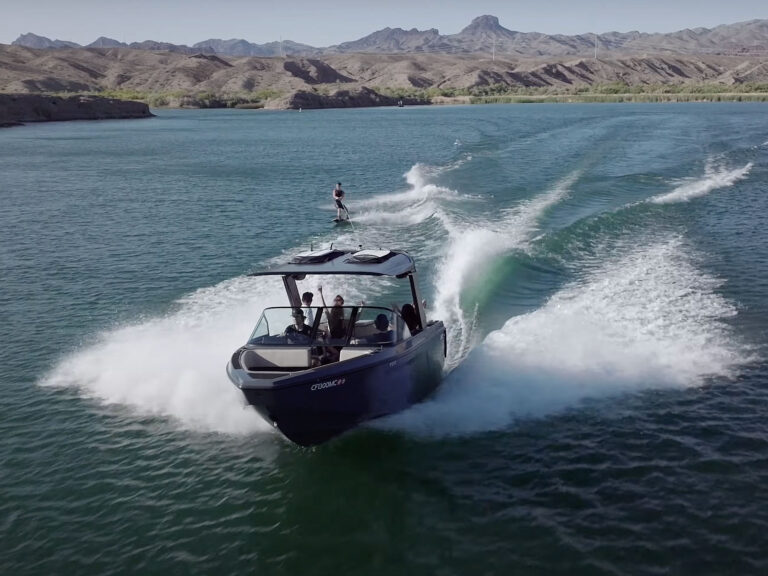
- Digital Edition
- Customer Service
- Privacy Policy
- Cruising World
- Sailing World
- Salt Water Sportsman
- Sport Fishing
- Wakeboarding
Many products featured on this site were editorially chosen. Boating may receive financial compensation for products purchased through this site.
Copyright © 2024 Boating Firecrown . All rights reserved. Reproduction in whole or in part without permission is prohibited.
JavaScript seems to be disabled in your browser. For the best experience on our site, be sure to turn on Javascript in your browser.
- +32 (0)58 62 50 77
Boardsportmateriaal
Nieuw assortiment in onze catalogus

My Reading Lists:
Use this Work
Create a new list
My book notes.
My private notes about this edition:
Buy this book
This edition doesn't have a description yet. Can you add one ?
Showing 1 featured edition. View all 1 editions?
Add another edition?
Book Details
Edition notes.
Translation of Sudovye dvigateli vnutrennego sgoranii͡a︡.
Classifications
The physical object, community reviews (0).
- Created April 1, 2008
- 4 revisions
Wikipedia citation
Copy and paste this code into your Wikipedia page. Need help?
- Family Notices
- Picture Sales
- Read the eEdition
- Sign-up to our newsletter

Lifeboat launches after boat engine room fire
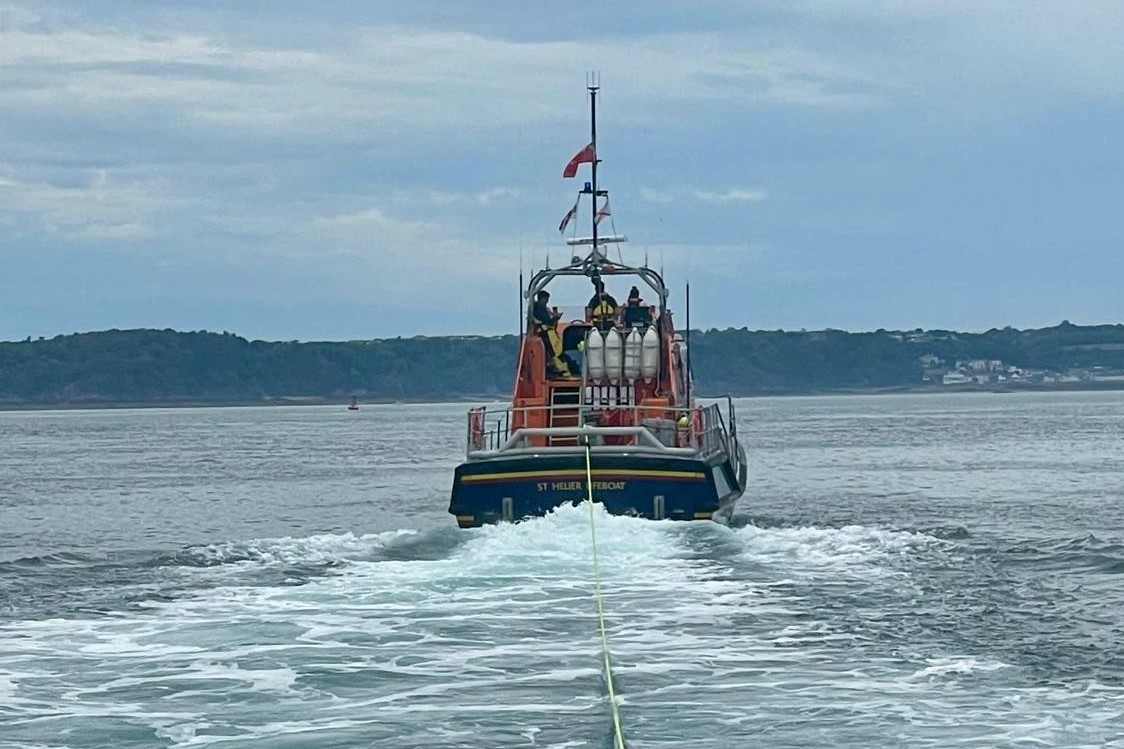
THE RNLI’s St Helier all-weather lifeboat came to the aid of a vessel with an engine room fire on Saturday afternoon.
The vessel’s crew managed to extinguish the fire by the time two RNLI crew members boarded the boat, which was towed back to St Helier.
Following the rescue, the RNLI praised the vessel’s crew for demonstrating “exemplary safety conduct”, which included wearing lifejackets, deploying their anchor, not entering the engine room and calling for assistance on their VHF radio.
Trending Stories
Taxi driver narrowly avoids driving ban after speeding, community service for man (23) who repeatedly hit woman who refused to have sex with him, man (32) sent to prison for hitting woman with glass, competition on island ferry routes ‘would not last long’, racehorse trainer fined for driving horsebox without insurance or wearing a seatbelt.

What the papers say – May 29

Sunny spells ahead but more storms looming for Scotland

Sunak vows to axe ‘rip-off degrees’ as Starmer sets sights on NHS

‘Saving Matheson’s skin’ would destroy public trust in MSPs, says Ross
Read the latest free supplements.
Read the Town Crier, Le Rocher and a whole host of other subjects like mortgage advice, business, cycling, travel and property.


IMAGES
VIDEO
COMMENTS
Give the engines time to inhale the air that's already in the engine room; sometimes, the revs start to fall as the air is used up. Then open the engine-room hatch or door; if the revs go up, you need more airflow. If the suction from the gasping engines makes it hard to open the door, you really need more airflow.
Welcome to Episode 4 of Axioma in the shipyard. This episode focuses on the engine room and what it takes to keep this beautiful yacht moving. https://my-ax...
In this case, no: Pressurizing an engine room often leads to unpleasant odors being driven out of this space and into the rest of the boat. Ideally, the air pressure within the engine room should be neutral to slightly negative (the preferred engine room air pressure is 0 to -0.25 inches of water column, measured using a water-tube manometer).
The two engine areas that present the greatest potential hazard in an engine room when the boat is underway are the two places where things are moving—the front and the back. Today almost all engines have metal guards covering the forward moving parts, but not aft, where the propshaft meets the marine gear.
Venting the Engineroom. This engine intake includes a 180° gooseneck that is designed to prevent ingestion of water. Consideration should be given to engine air intake locations: those that are subject to heavy spray are less than ideal, and if chosen should include a means of water exclusion or separation. I looked at the thermometer attached ...
There are two other aspects of engine-room ventilation of which you should be cognizant. One is making sure that your engines are getting the proper volume of fresh air for combustion. It's uncommon (but not unheard of) to find a pleasureboat engine room where this is a problem because proper sizing of the engine-room openings is an important ...
9. bilge and ballast systems. 10. ventilation systems. 11. cargo systems (for liquid cargo) 12. domestic systems. a. fresh water system. b. seawater water system. c. waste system (black water, grey water, incinerator) Not to forget all piping and electrical systems to be run in the engine room following all safety rules.
World Leader in Engine Room Ventilation Solutions. With systems on over 19,000 vessels world-wide, our marine fans and blowers, moisture eliminators, fire dampers, smart controls, and off load hooks are each purpose-built to withstand the harsh marine environment in which you operate. We invite you to see for yourself why Delta-T Systems is the ...
I had often thought the idea of an engine-room camera would be an excellent idea for remote monitoring without physically lifting up the cabin sole, but the $400 price tag for a marine engine-room camera was a bit pricey. I then realized that a truck backup camera would be a far cheaper alternative.
Engine Room and Related Temperatures: ... Beginning his career in 1988, as a marine mechanic, electrician, manager and partner of a custom boat building shop and two boatyards and technical journalist, as well as through Steve D'Antonio Marine Consulting, Inc, Steve provides personalized and hands-on service to boat buyers, boat owners, boat ...
On a boat, an unshielded diesel genset will produce sound levels of 100 dBA at 3 feet; an inboard typically raises the noise in the engine room to about 110 dBA. The object is to drop those levels to approximately 75 dBA for more-or-less normal conversation, and another 20 dBA for comfortable sleeping with the engine running.
While Cummins and John Deere specify 30°F (17°C), Caterpillar's requirements, as well as those of ISO 8861, are more stringent, they call for a maximum delta T of 22.5°F (13.5°C). If engine air inlet, and thus engine room, temperature is too high, the engine efficiency can suffer. However, a more insidious side-effect involves the ...
with engines running and sucking in all the engine room air, I fear even smoke would be dissipated too. fast to be very visible. Probably best to find an installation and talk with an experienced owner to find. one that meets your requirements. I found I'd need five cameras for good coverage of my 8V71TI's.
Barrelback 19 by Gary Schoenfeldt - Sagle, Idaho. Click here for Gary\'s PDF booklet of building his Barrelback added August 2015 New Photos Added February 2013 June 2012 This Barrelback 19 is built from plans by Ken Hankinson, who got his start with Glen-L and since his retirement Glen-L is the only source for Ken\'s plans.
With the introduction of its ZZ8R and ZZ8S, Pleasurecraft Marine ( PCM) offers two supercharged marine engines that can produce maximum power and torque without needing 93 or higher octane gasoline. In fact, the ZZ8S is the first supercharged inboard tow-sports engine over 600 hp to run on Rec 90. This milestone is important for several reasons.
May 11, 2016. Power & Precision. Capt. Richard Thiel discovers that there are as many ways to design a good engine room as there are types of boats. It probably comes as no surprise to you that I spend most of my boat-show time in engine rooms. In fact, on many boats I never even get to the saloon or accommodations.
Our presence in the port ensures that you can always count on us, both before and during your water sports adventure. Seashop is one of the largest online shops for boat articles and boat parts. Find everything you need with our more than 15 years experience. Shop easy en fast delivery.
A well-configured engine room will be designed and built around the main propulsion system. On a single-engine trawler, you should have at least shoulder-width room 360 degrees around the engine. If the boat has twin engines, the same rule applies. Be leery of twin-engine boats where the outboard sides of the engines are not fully accessible.
It's solving this problem, but very, very slowly. In early July, UEC Rostec—a Moscow engine-maker— delivered to Severnaya Verf shipyard in St. Petersburg a massive M55R marine engine. The ...
April 1, 2008. Created by an anonymous user. Imported from Scriblio MARC record . Marine internal combustion engines by Nikolaĭ Viktorovich Petrovskiĭ, 1960, Mir Publishers edition, in English.
RNLI lifeboat rescues boat with engine room fire (38129443) THE RNLI's St Helier all-weather lifeboat came to the aid of a vessel with an engine room fire on Saturday afternoon. The vessel's ...